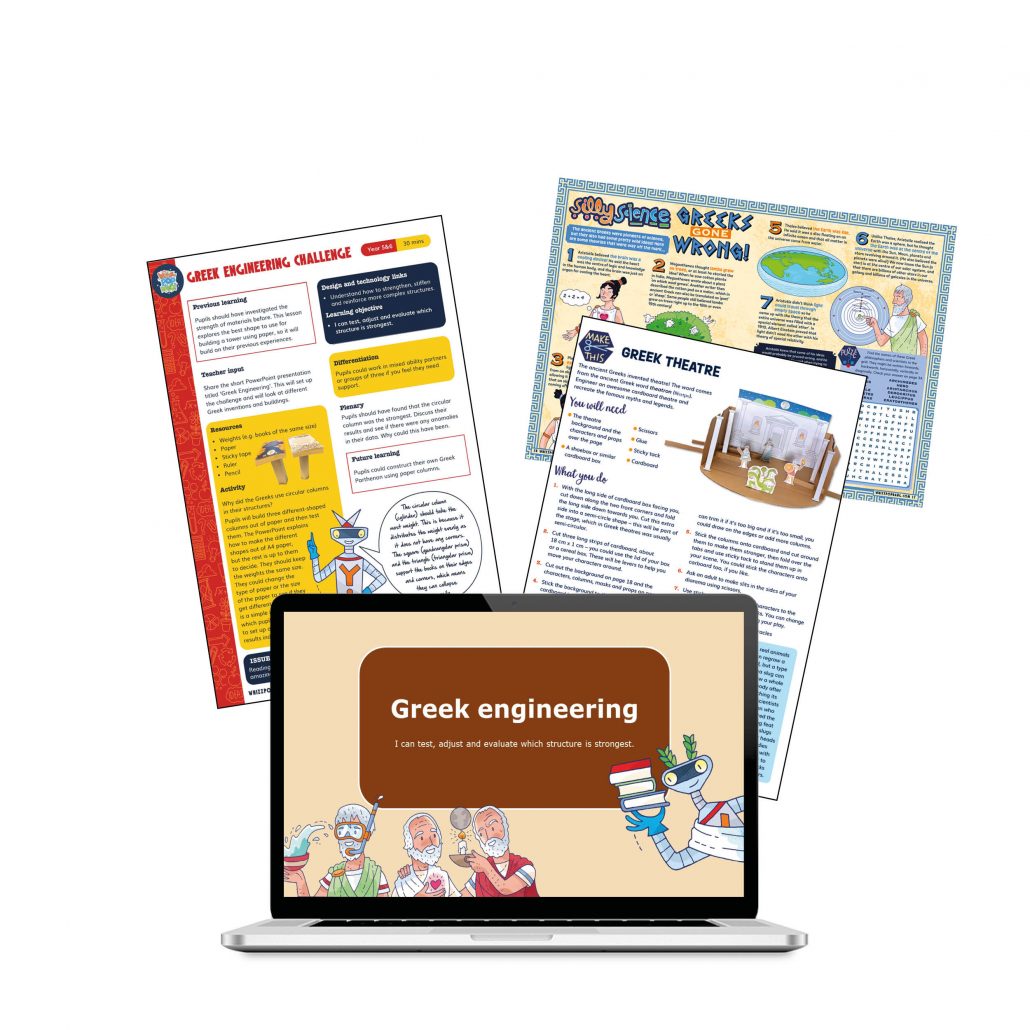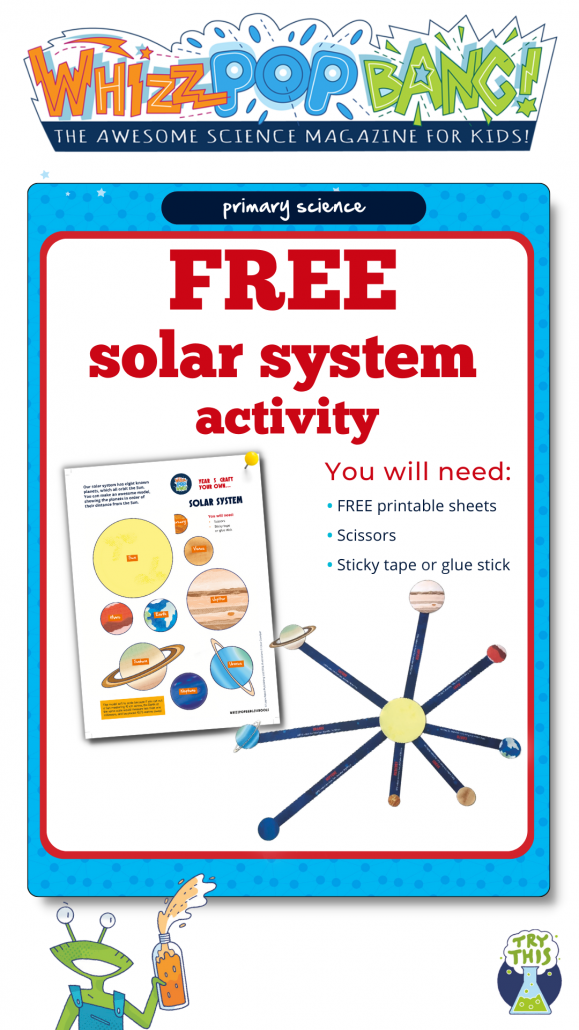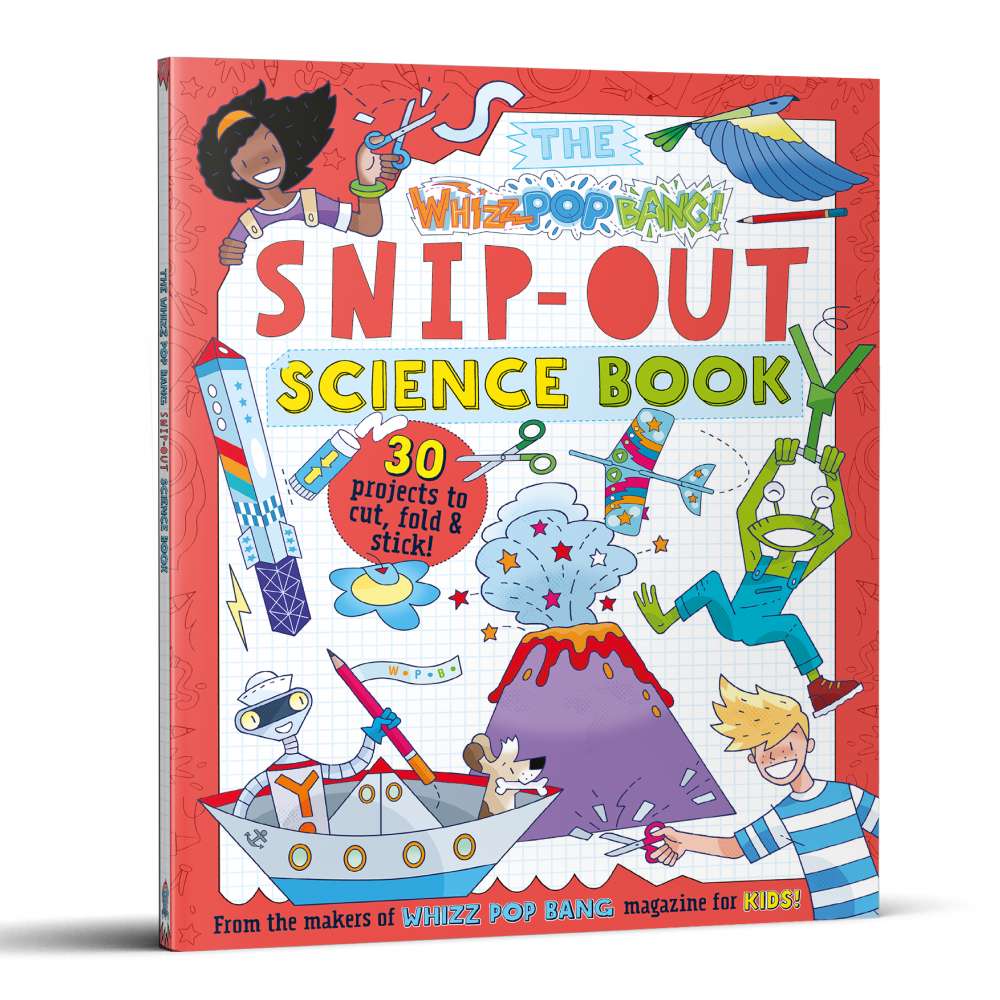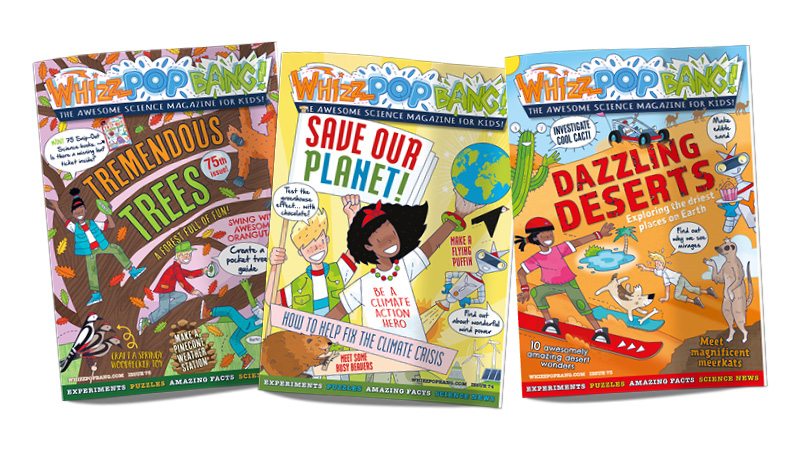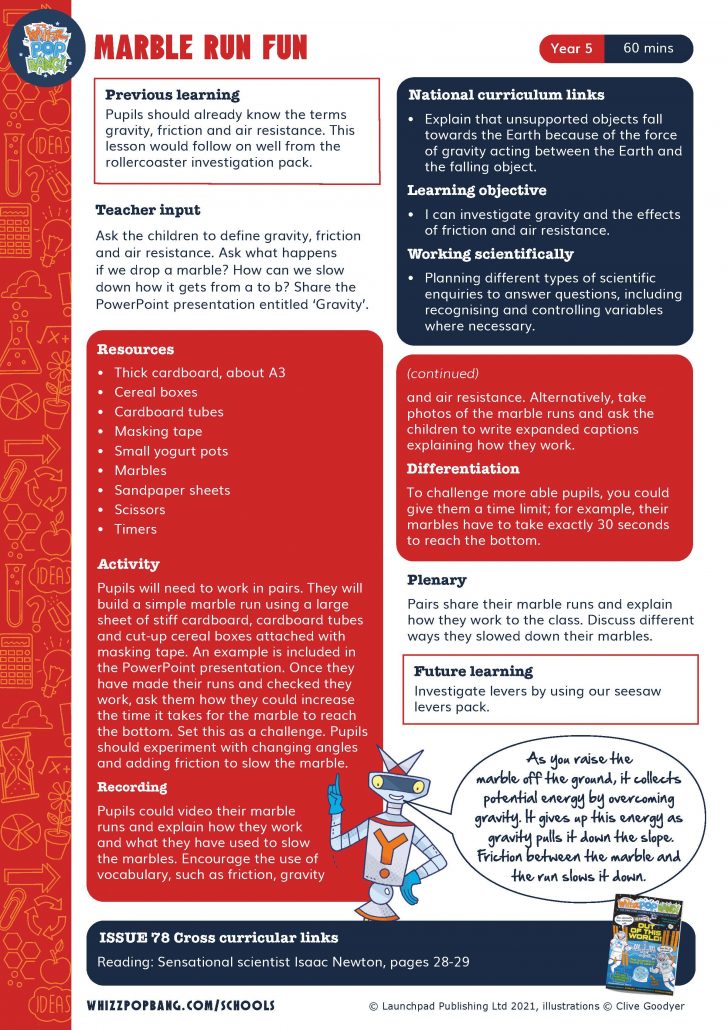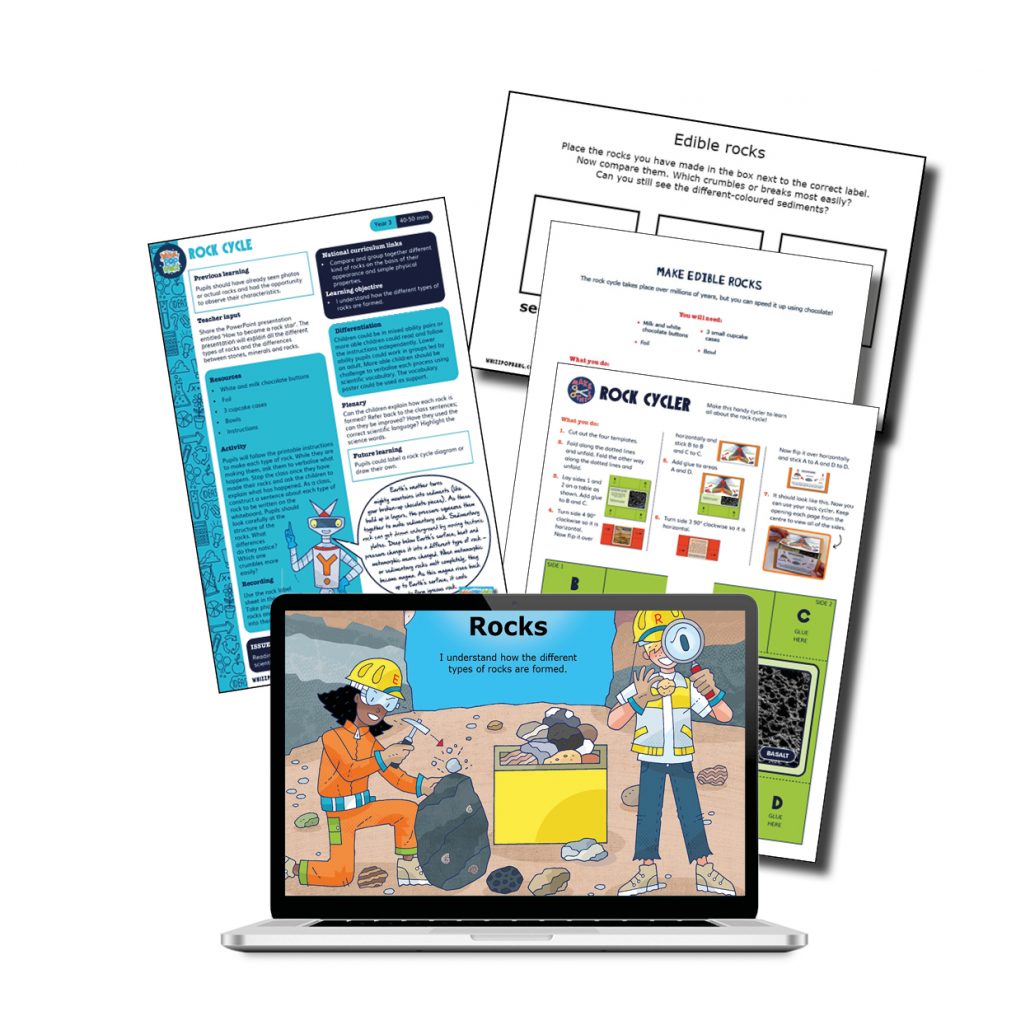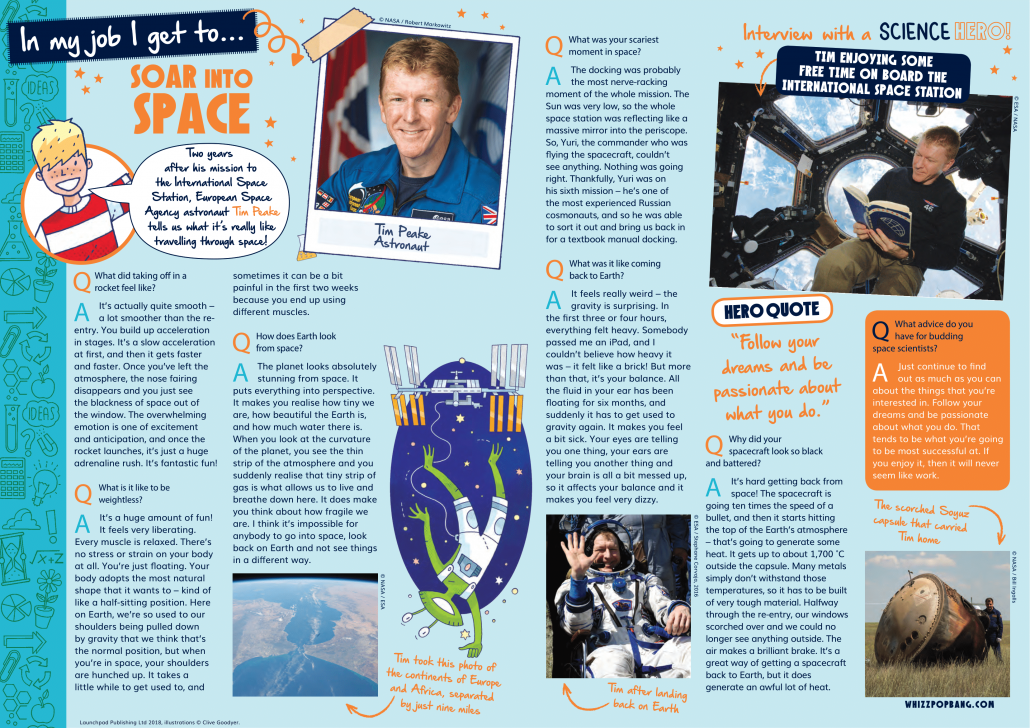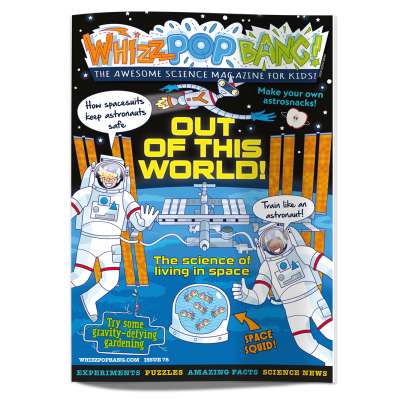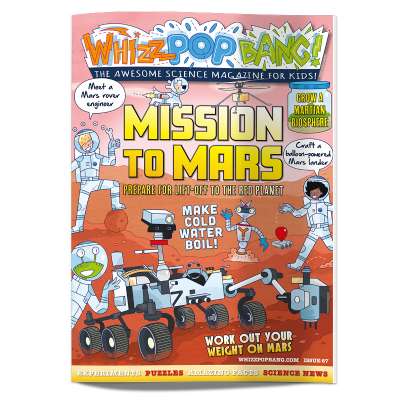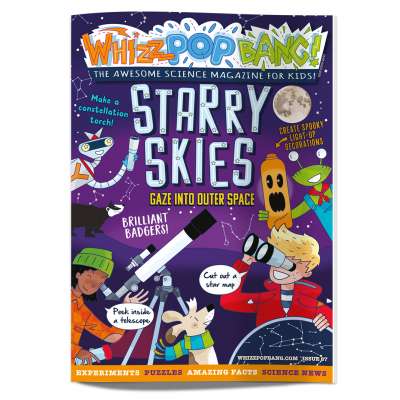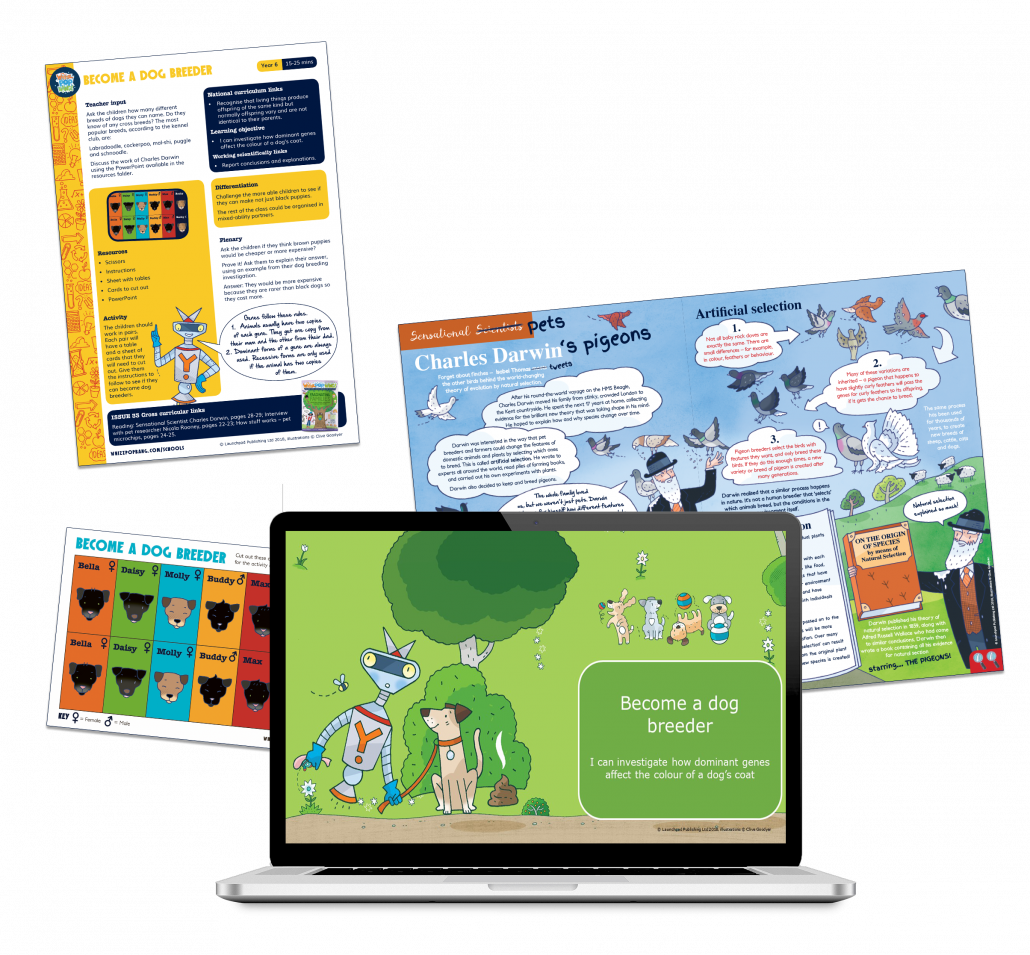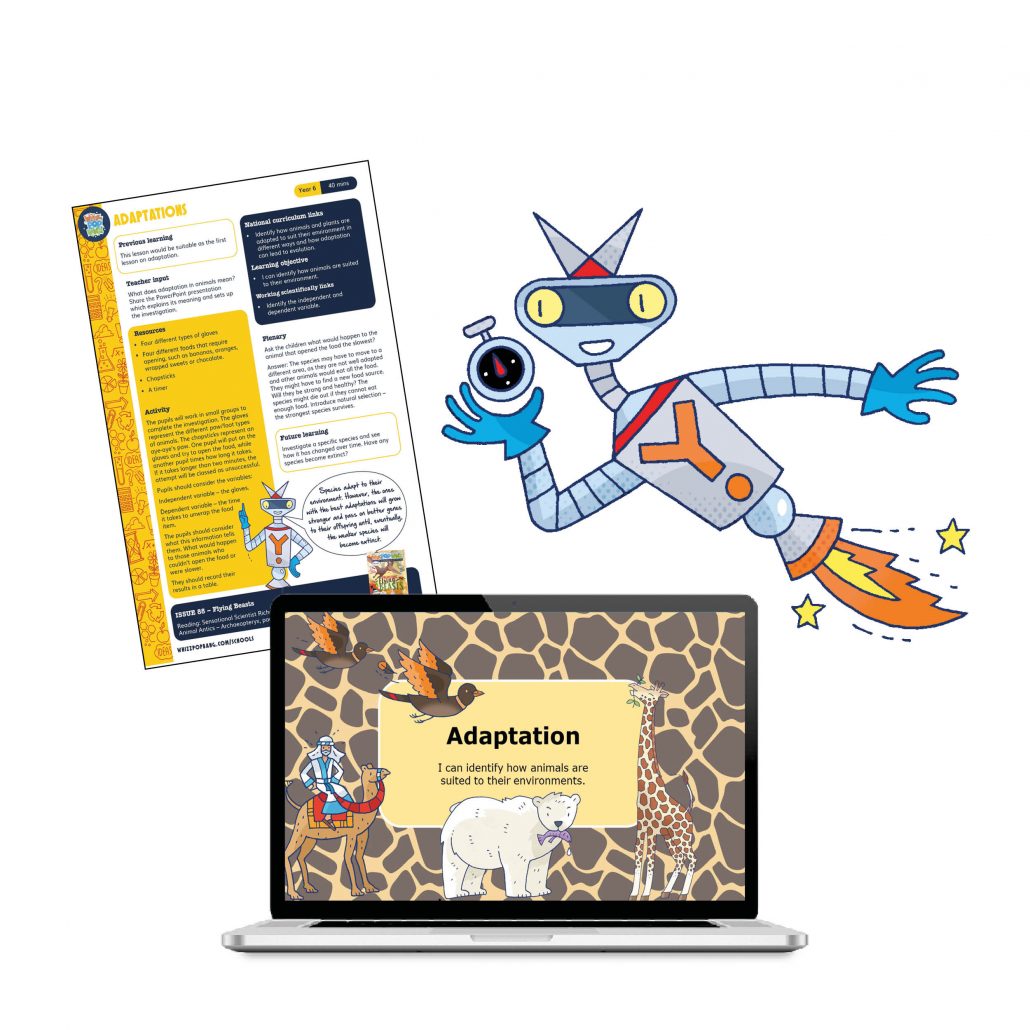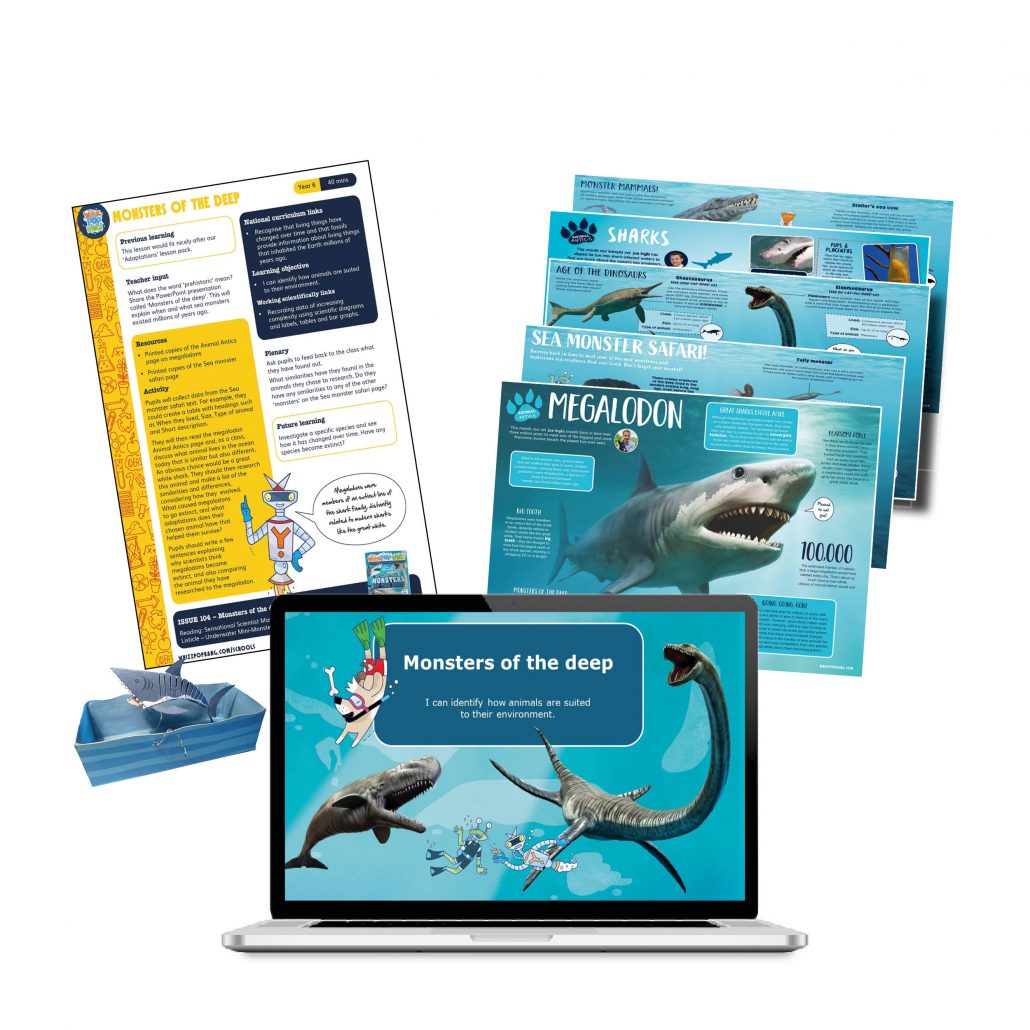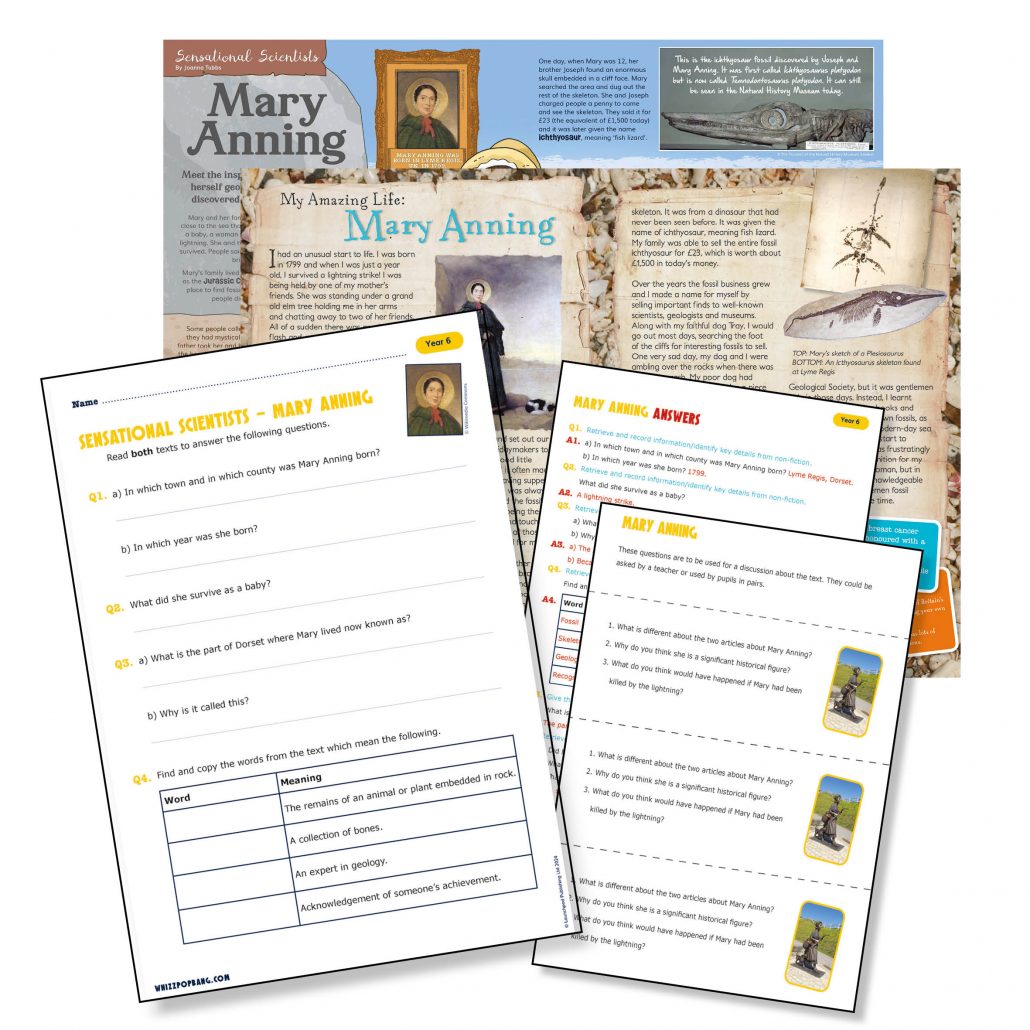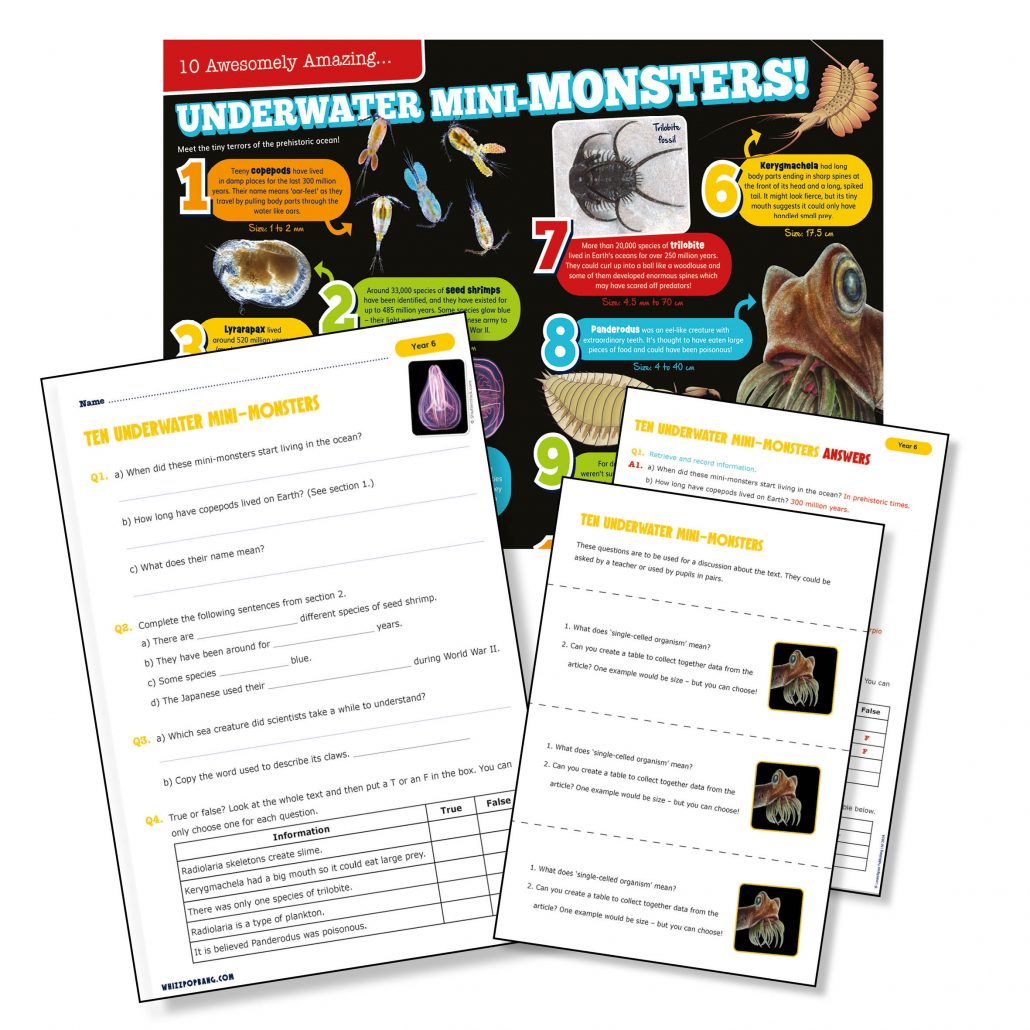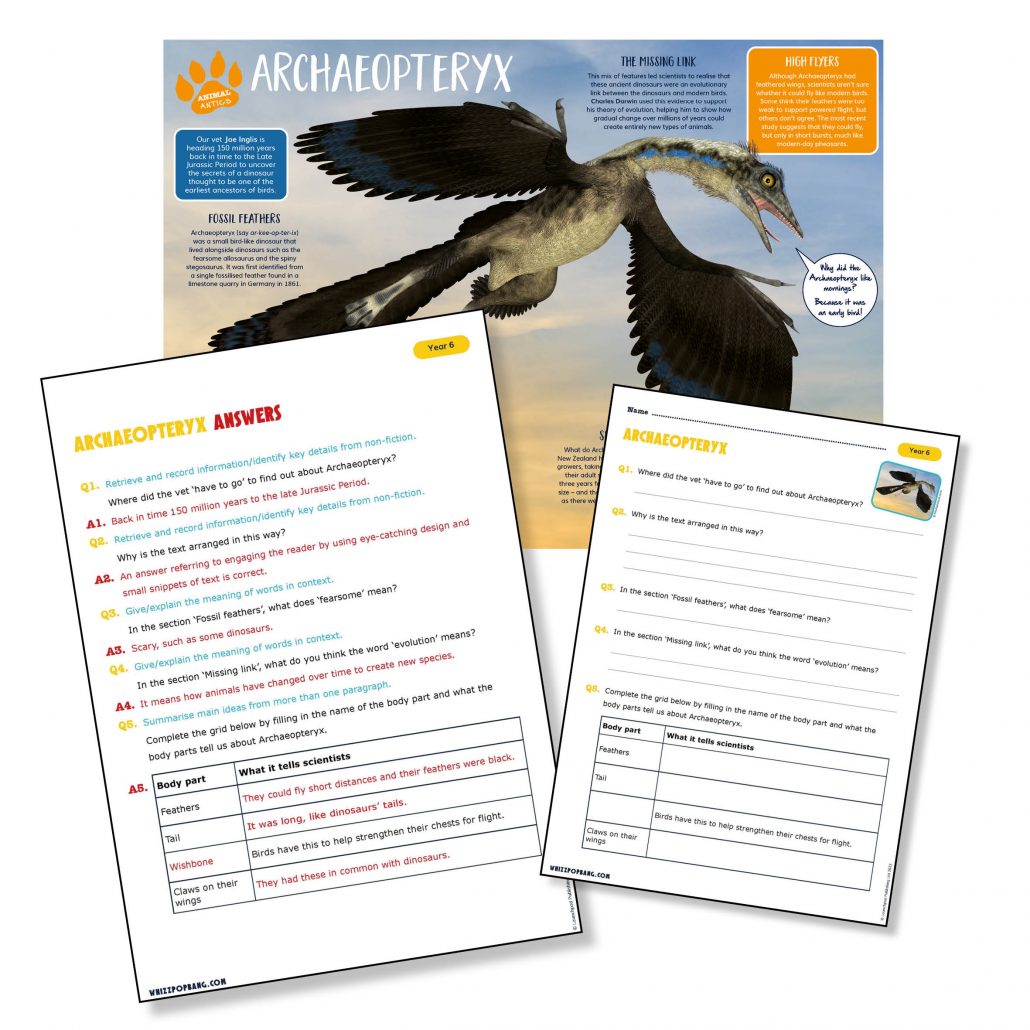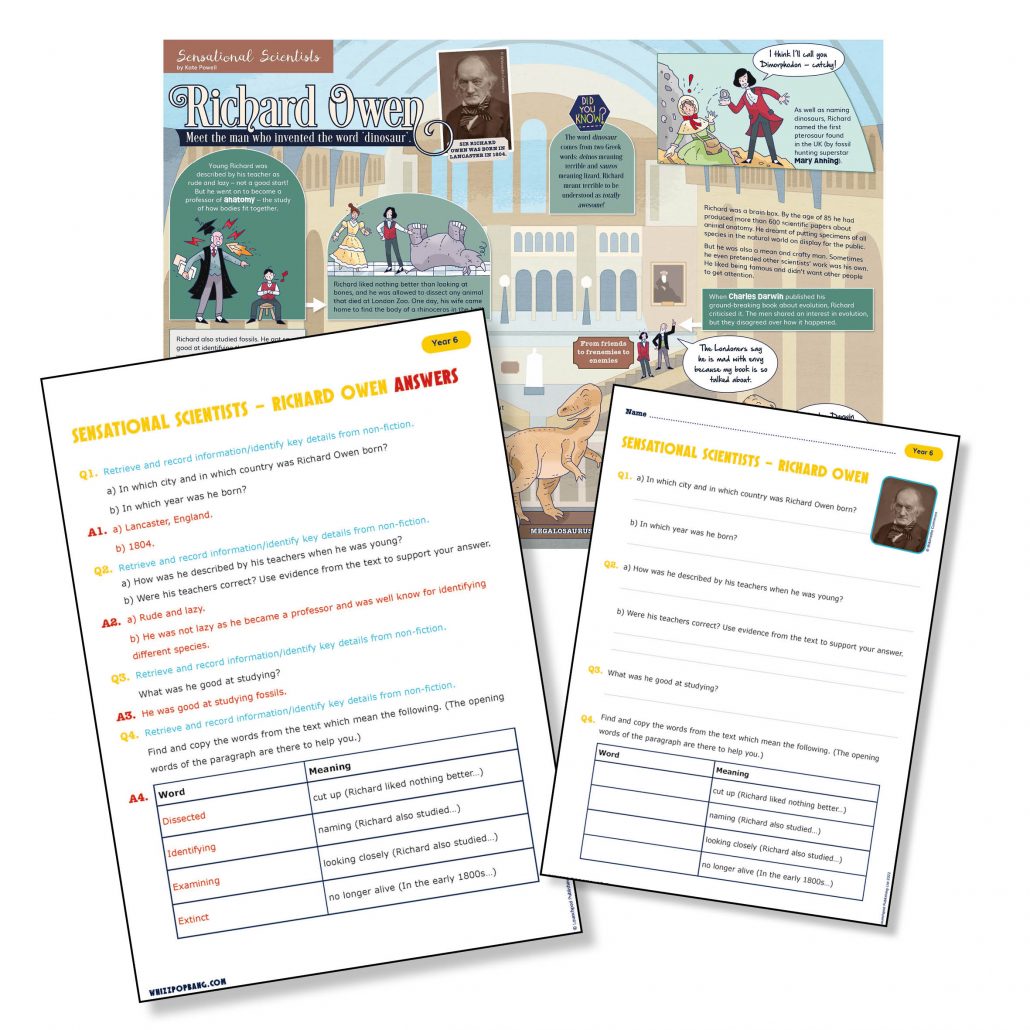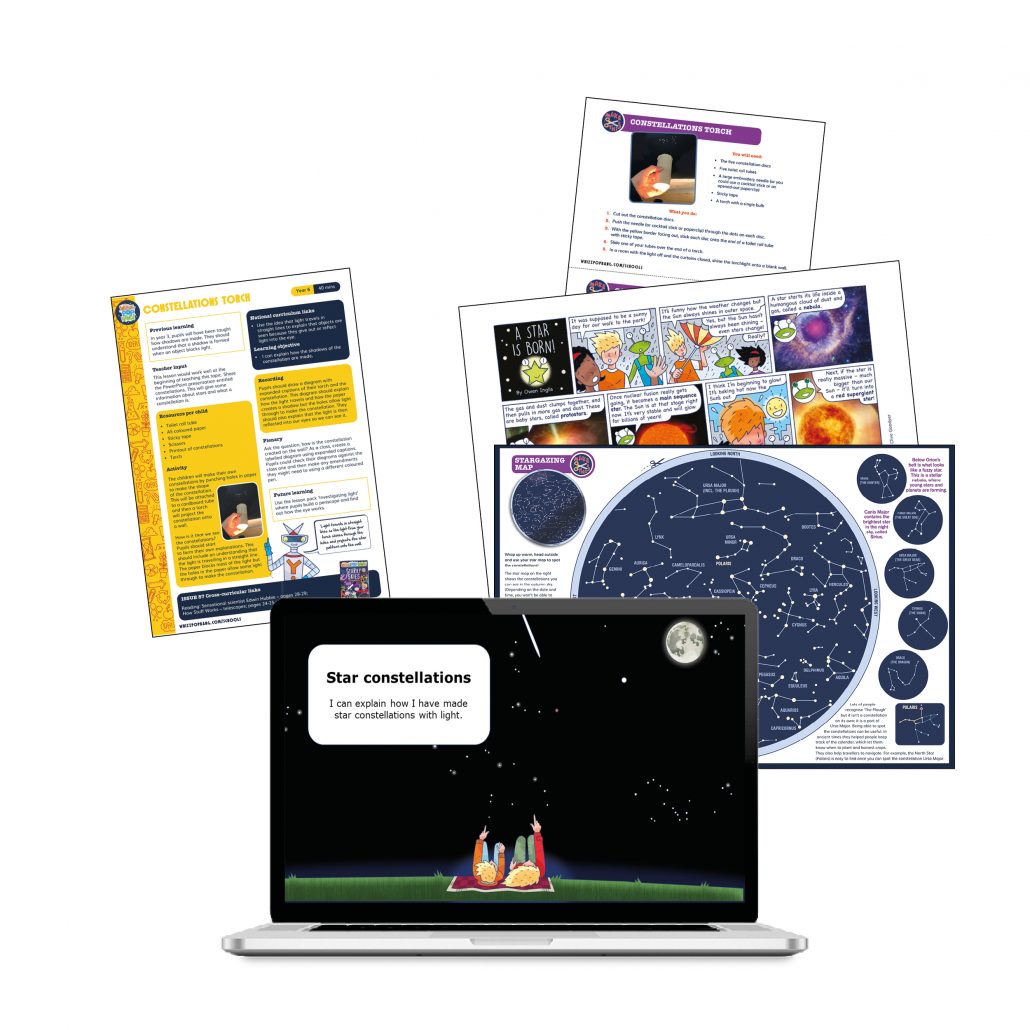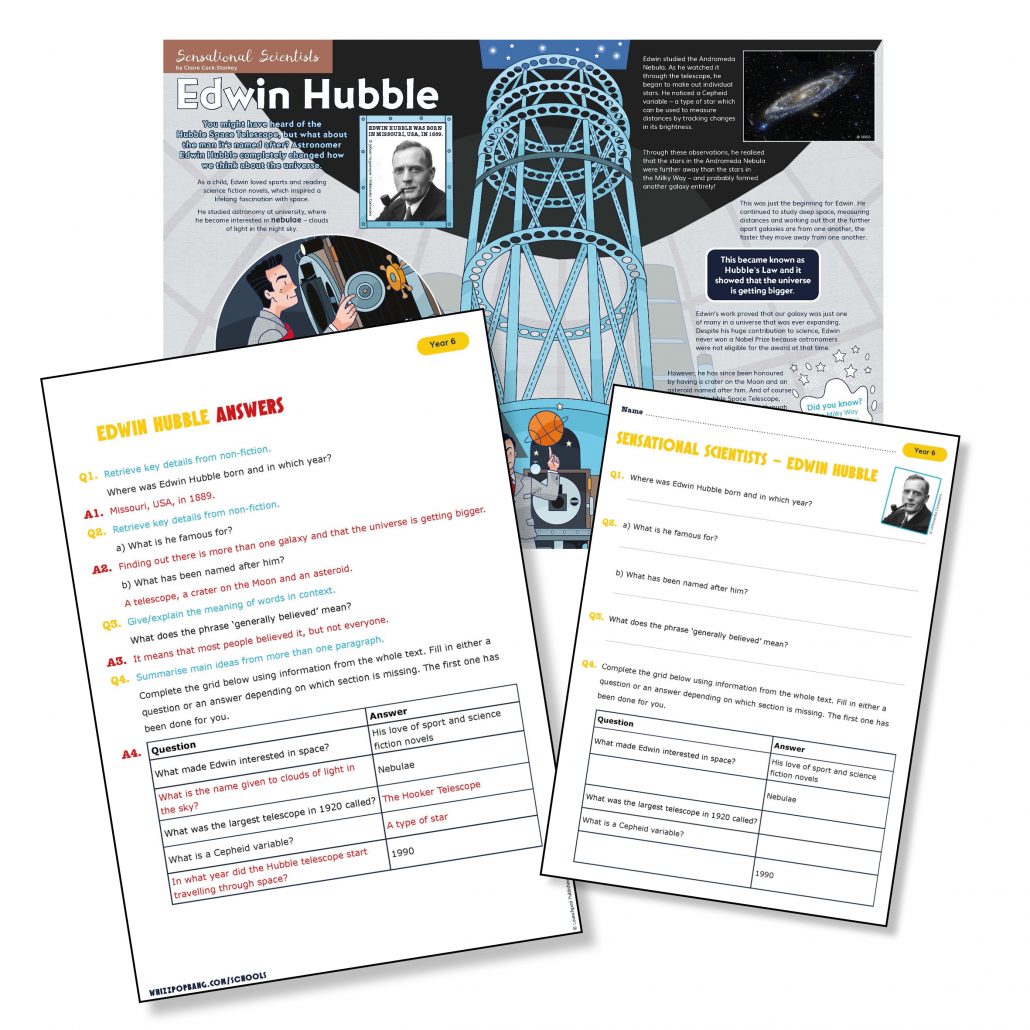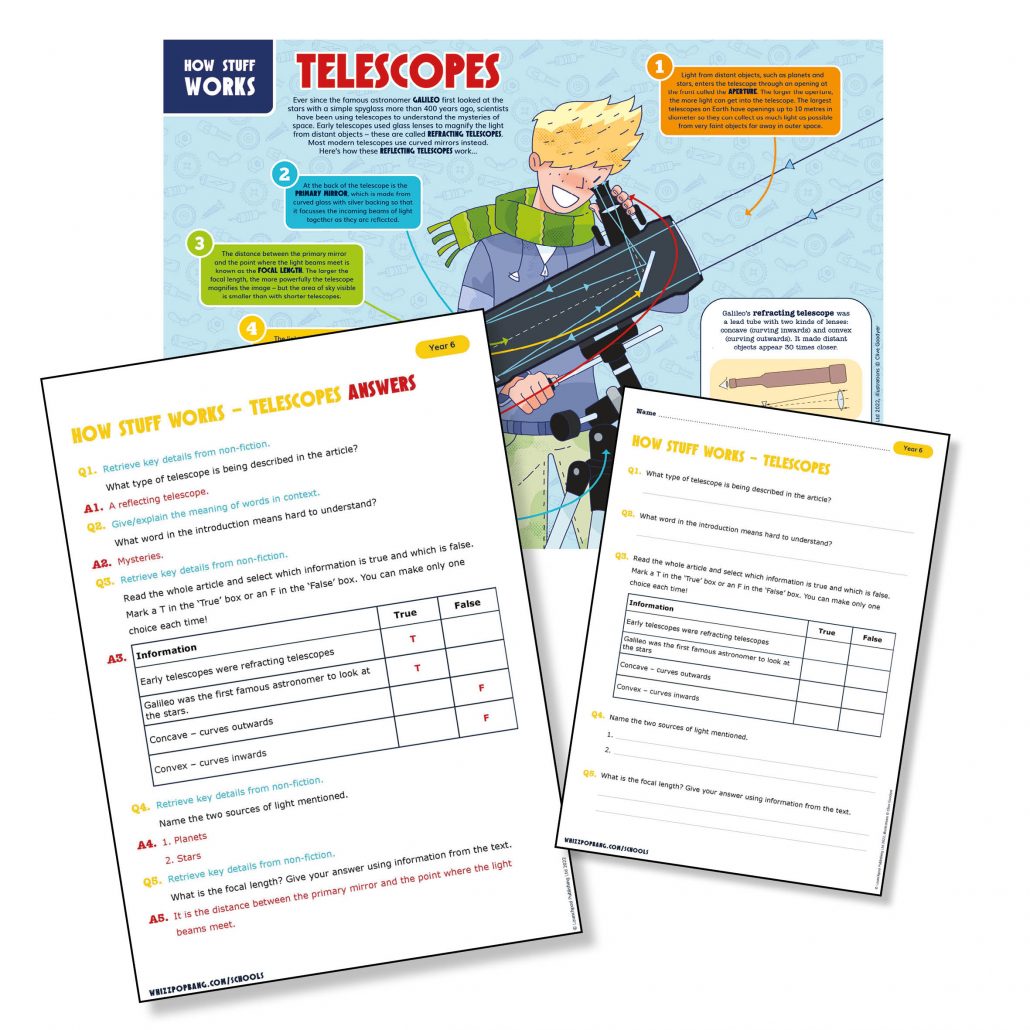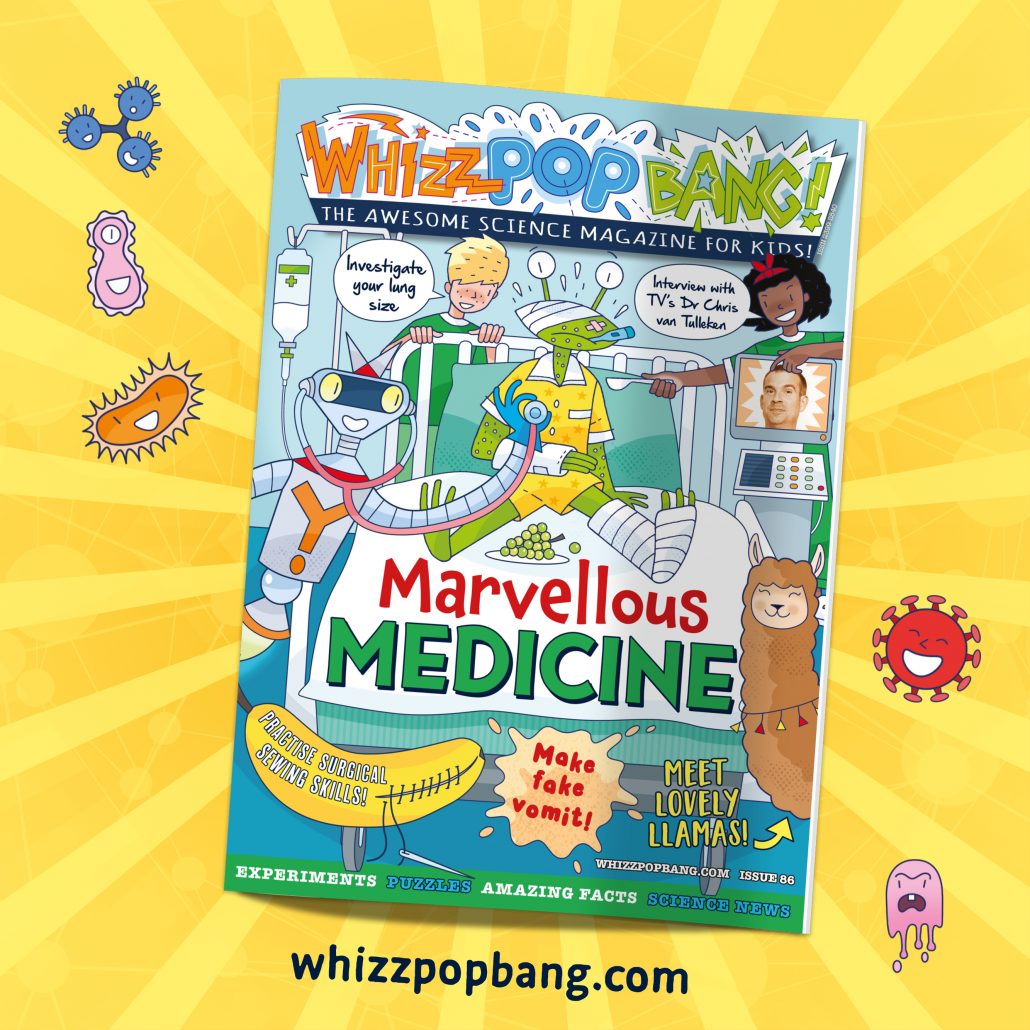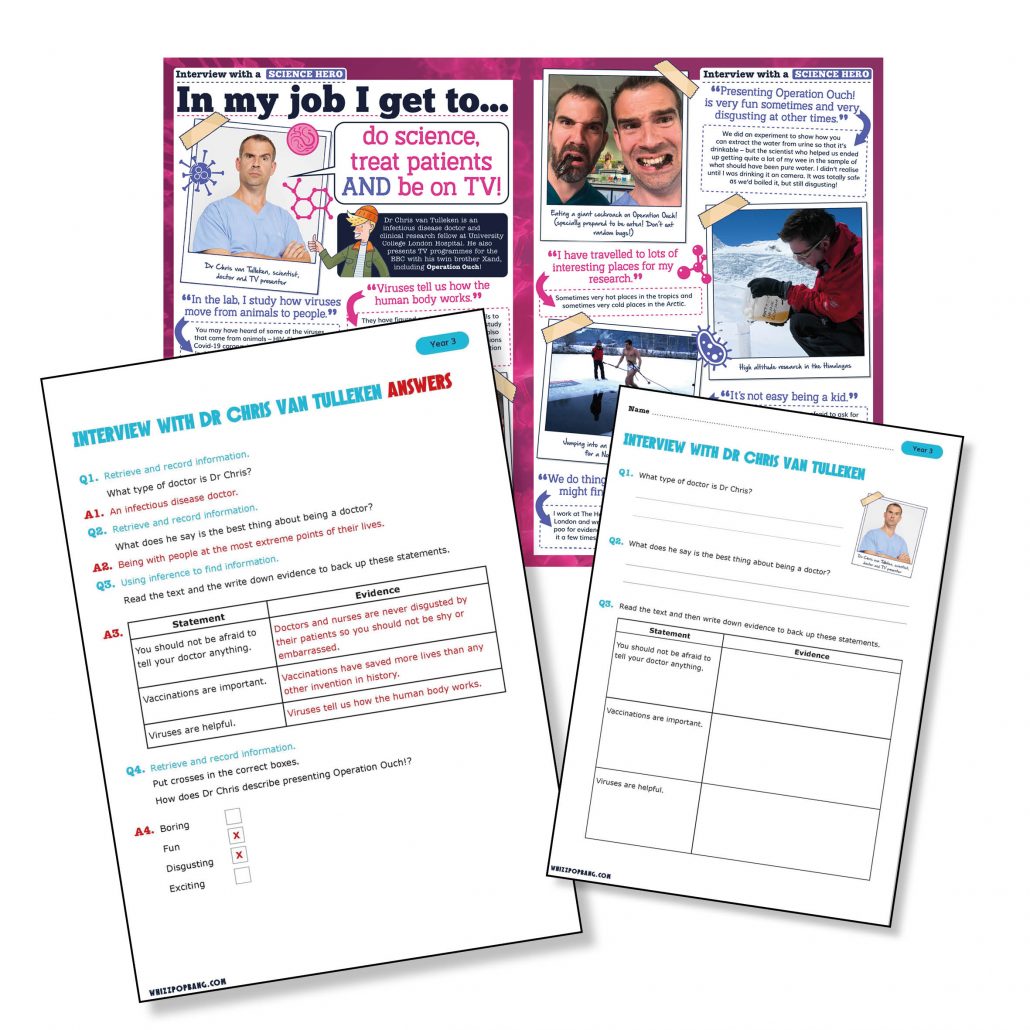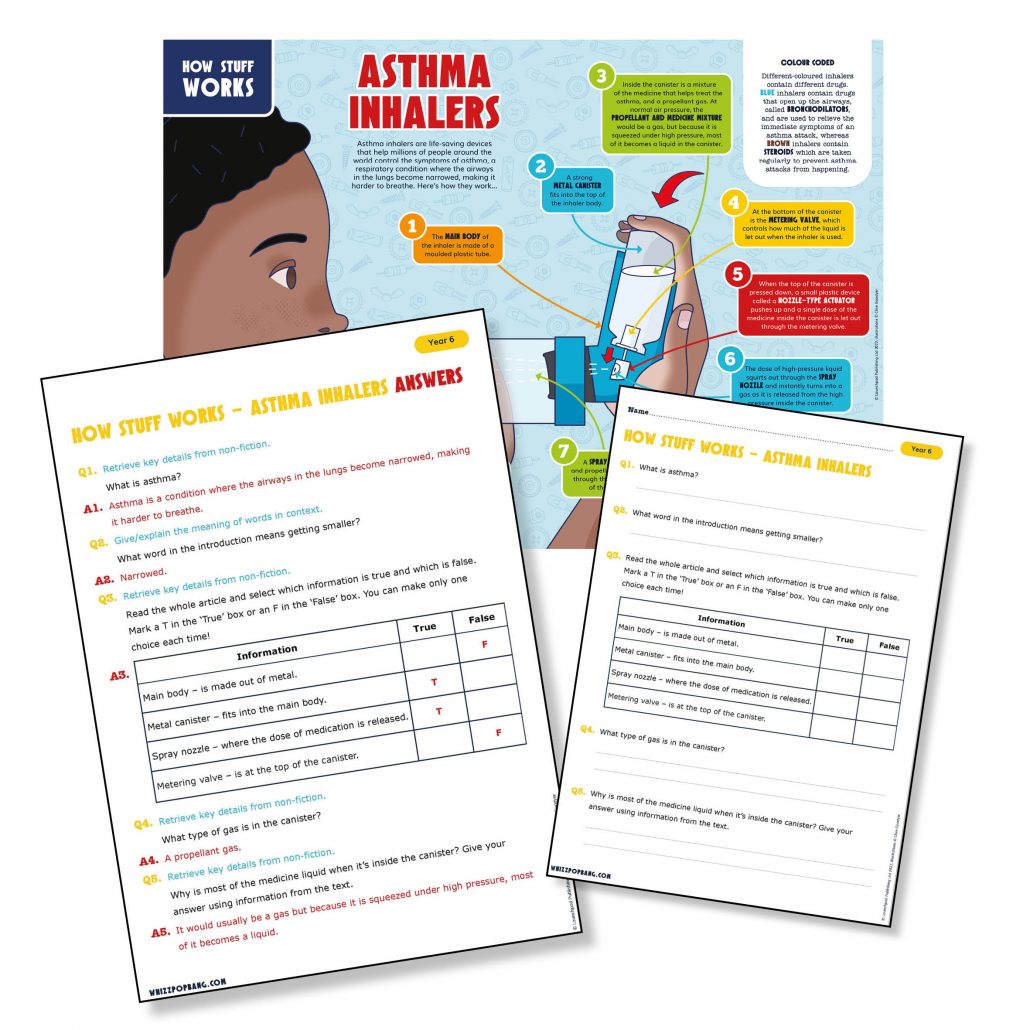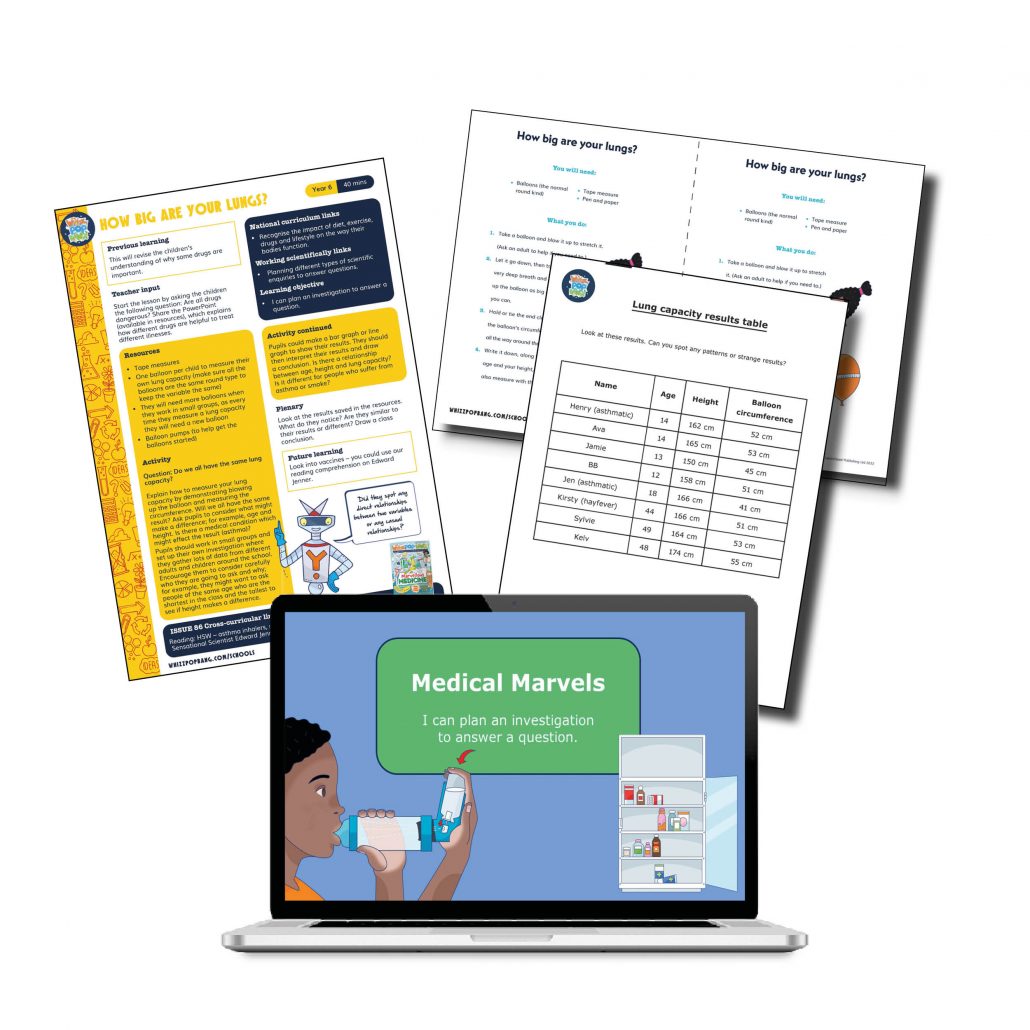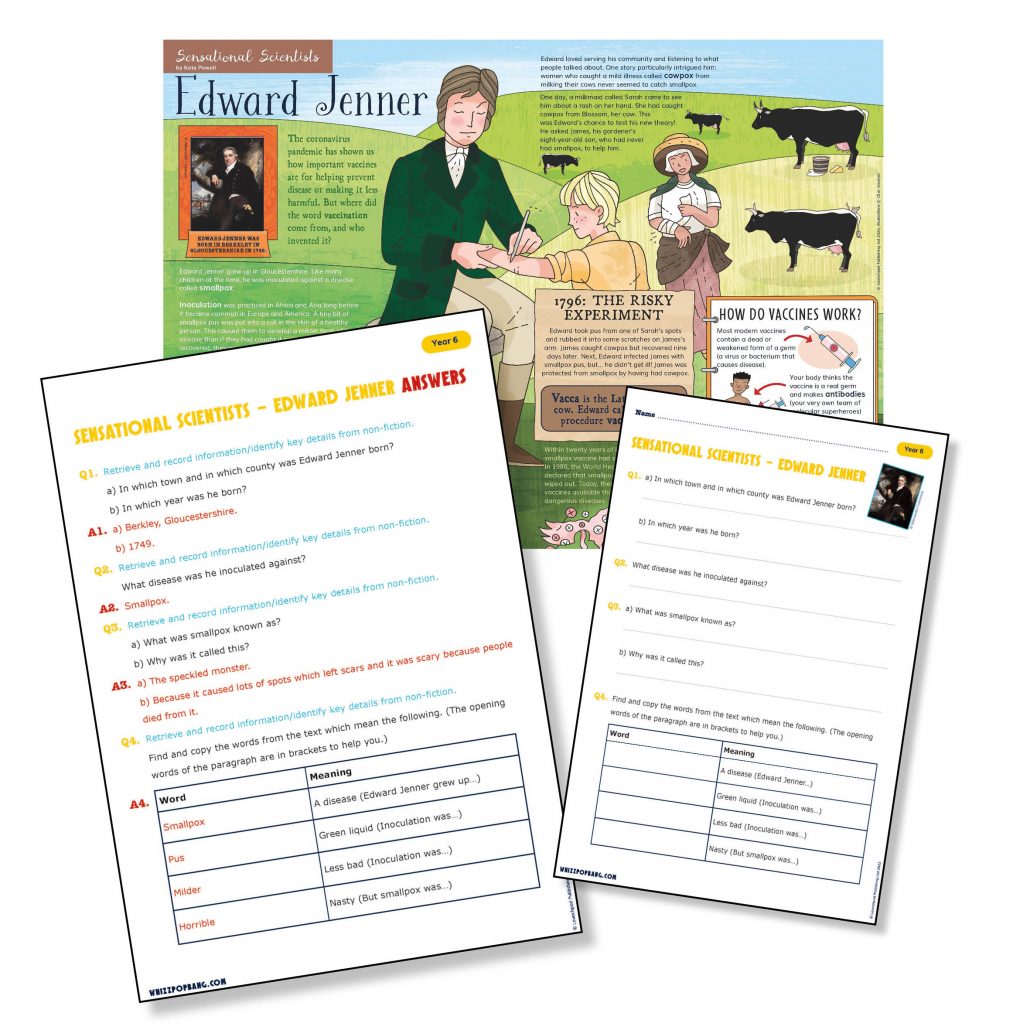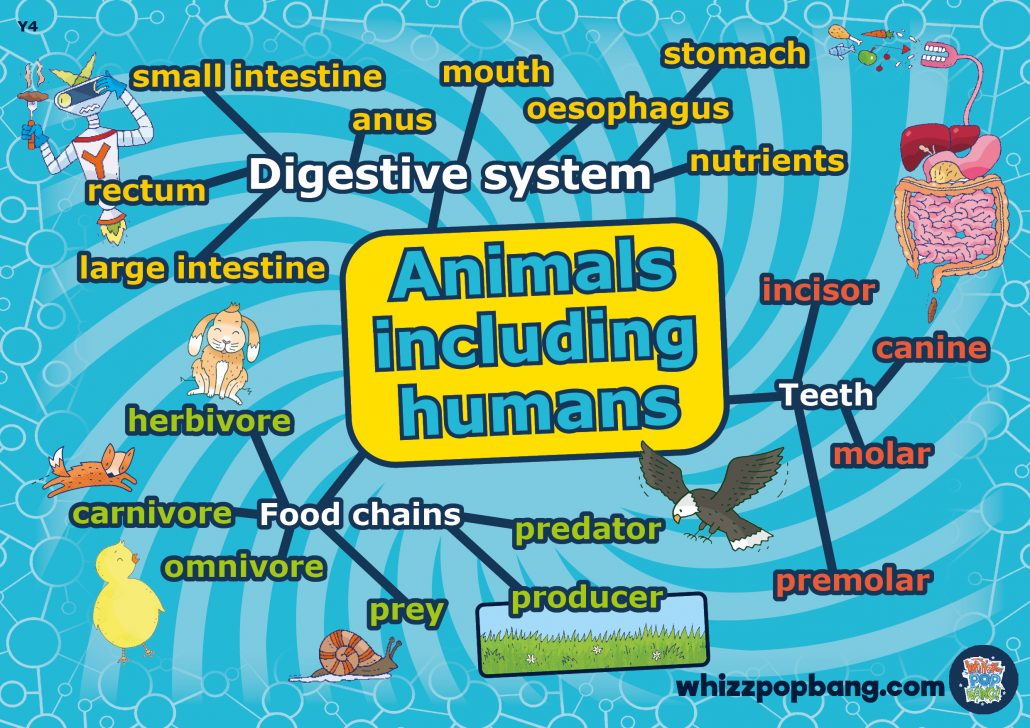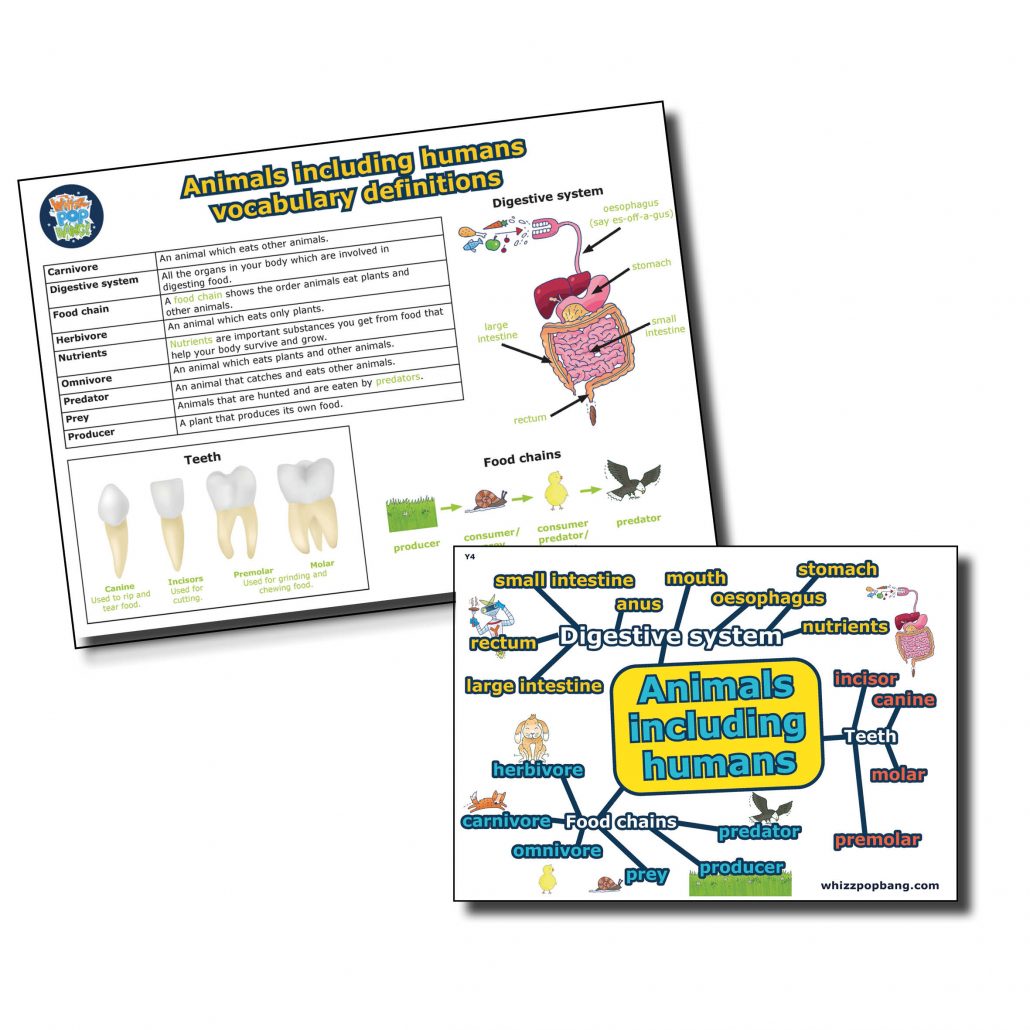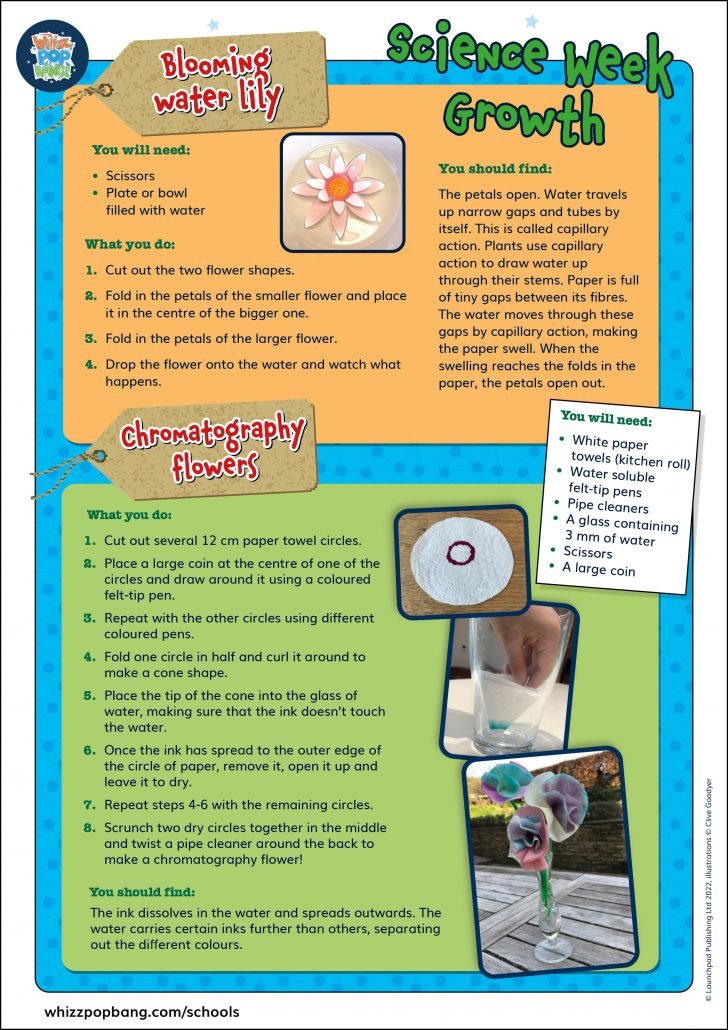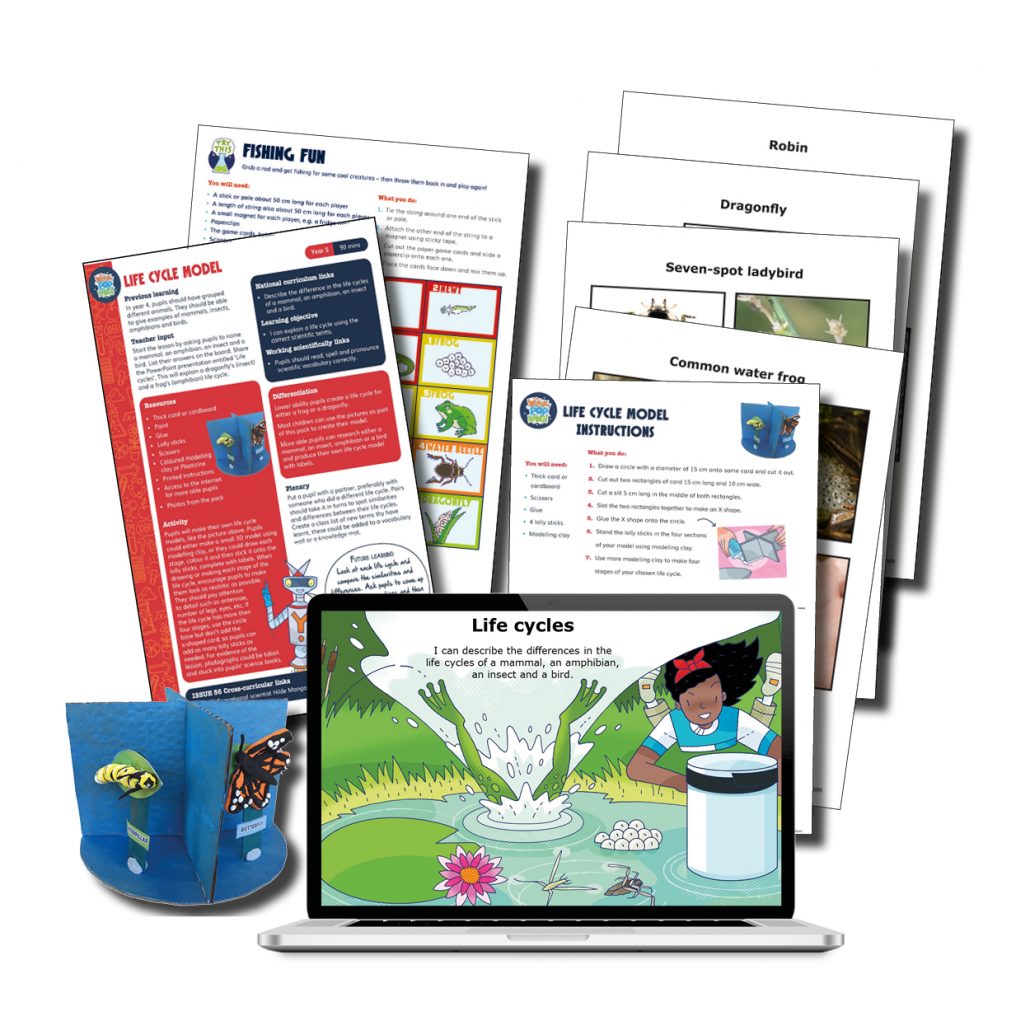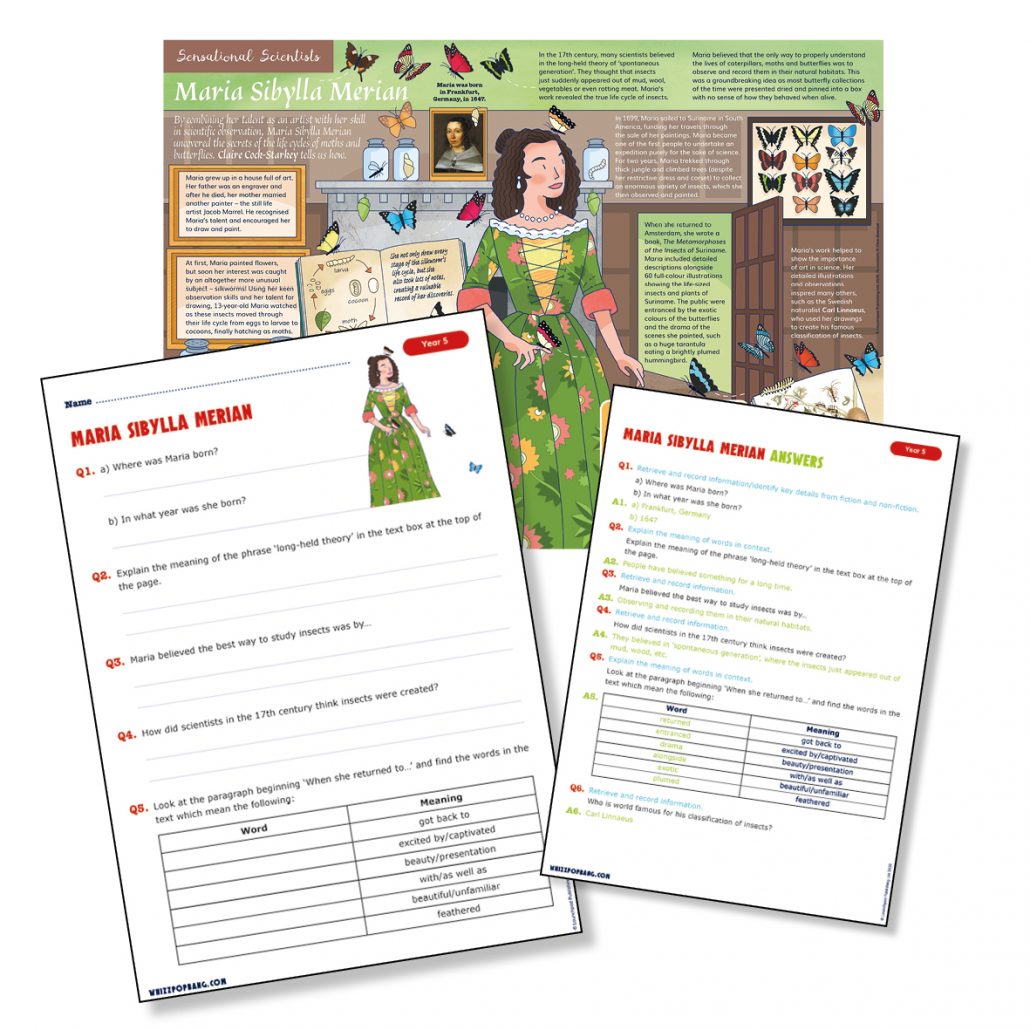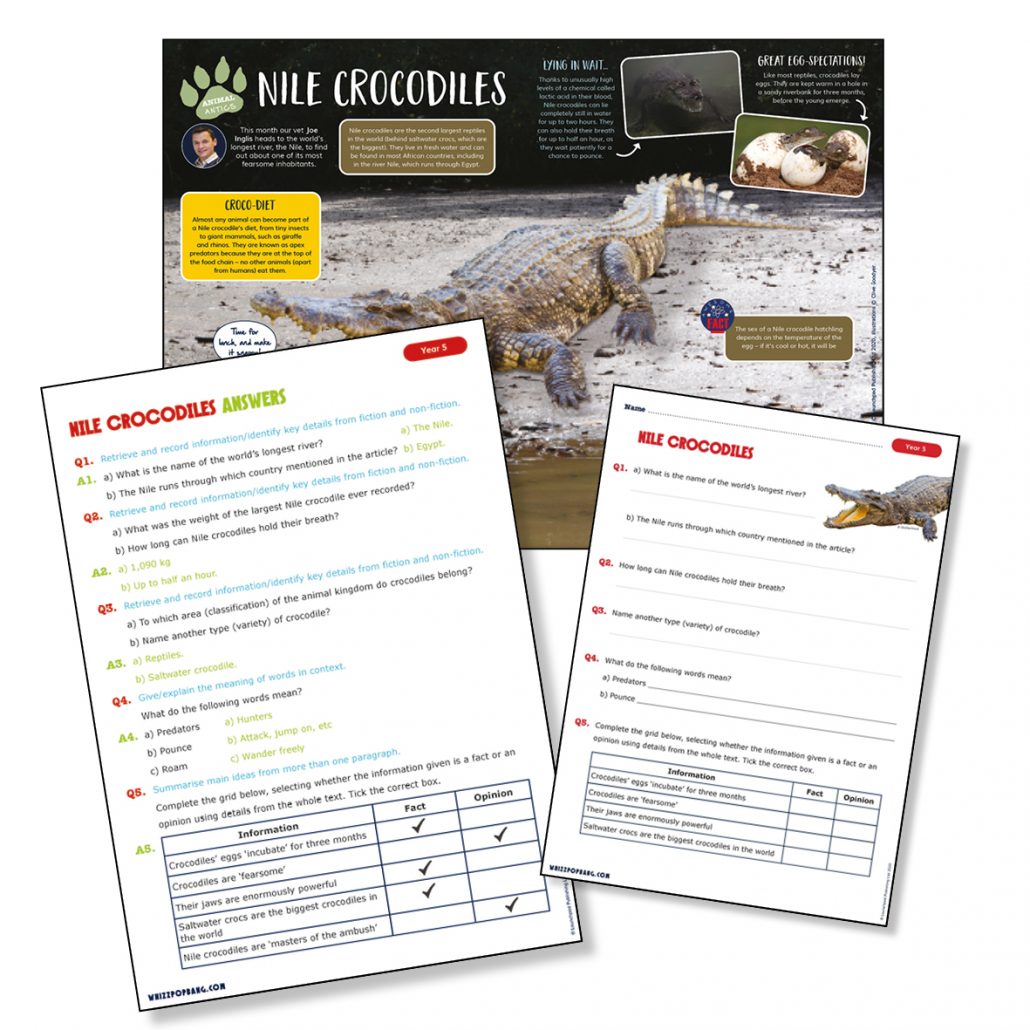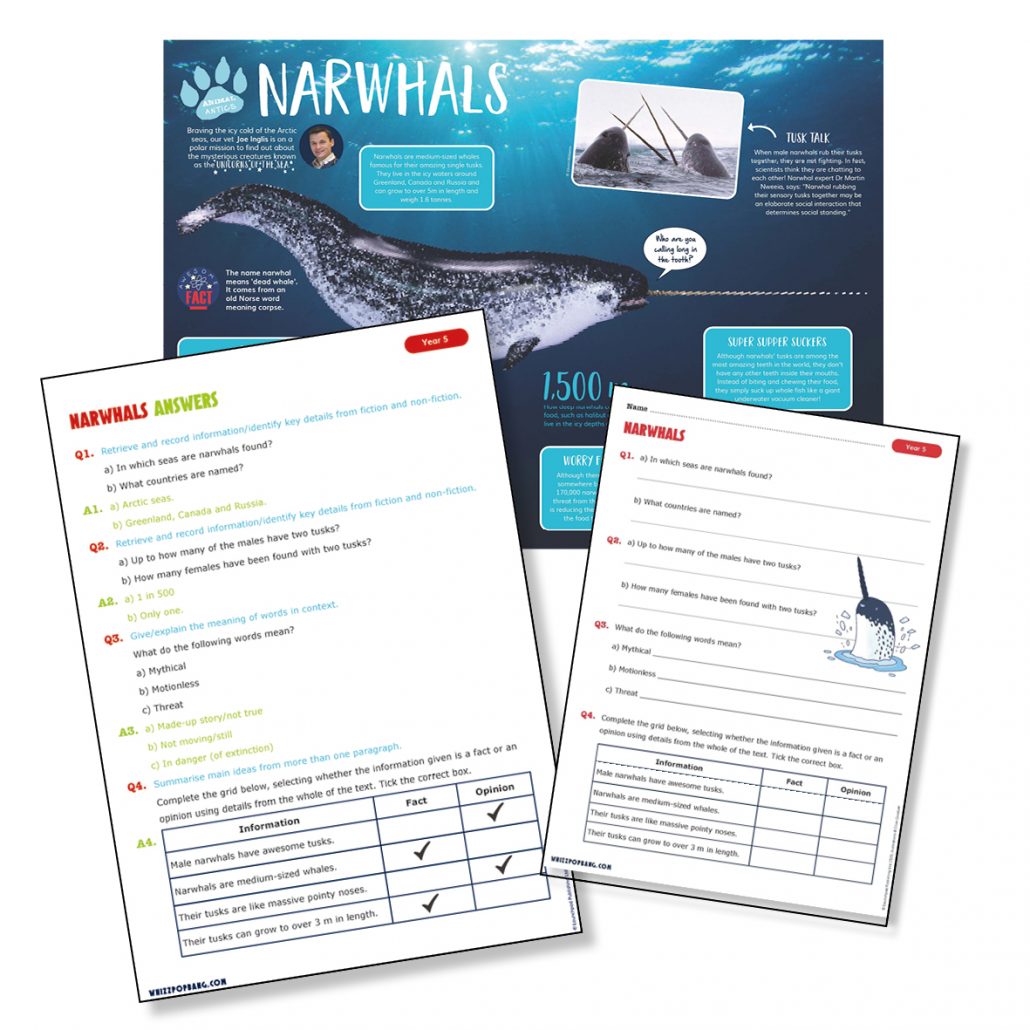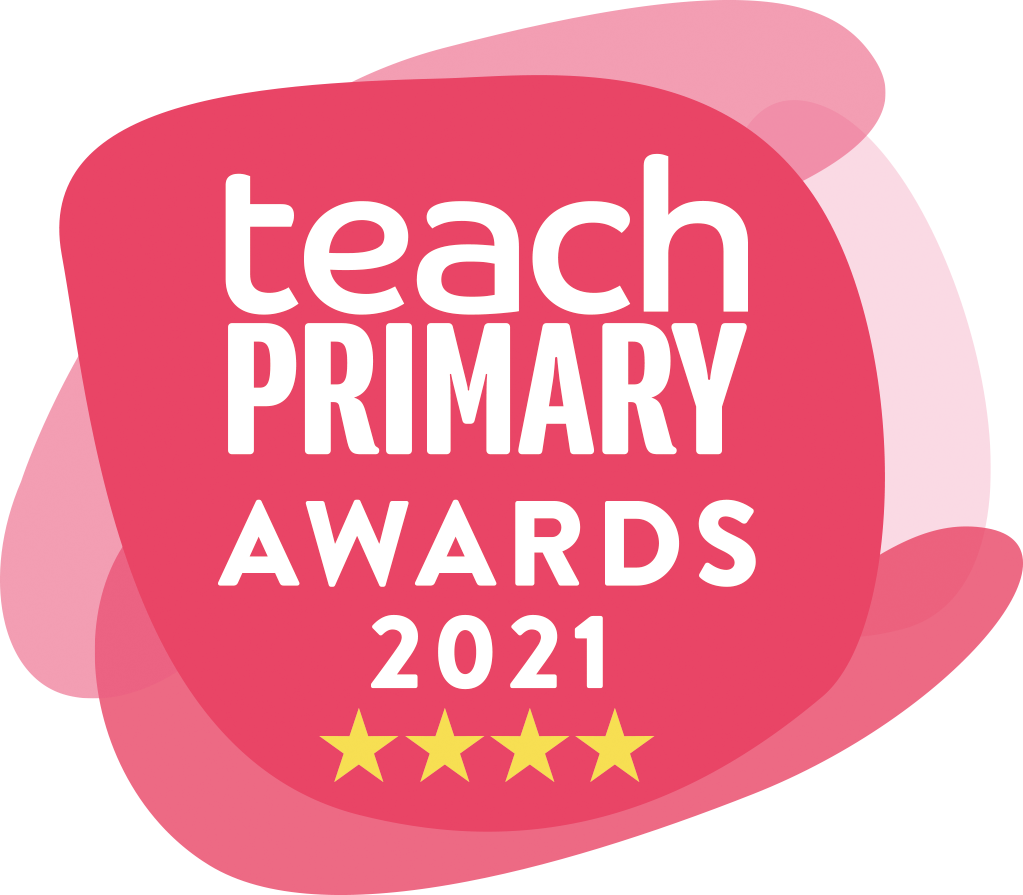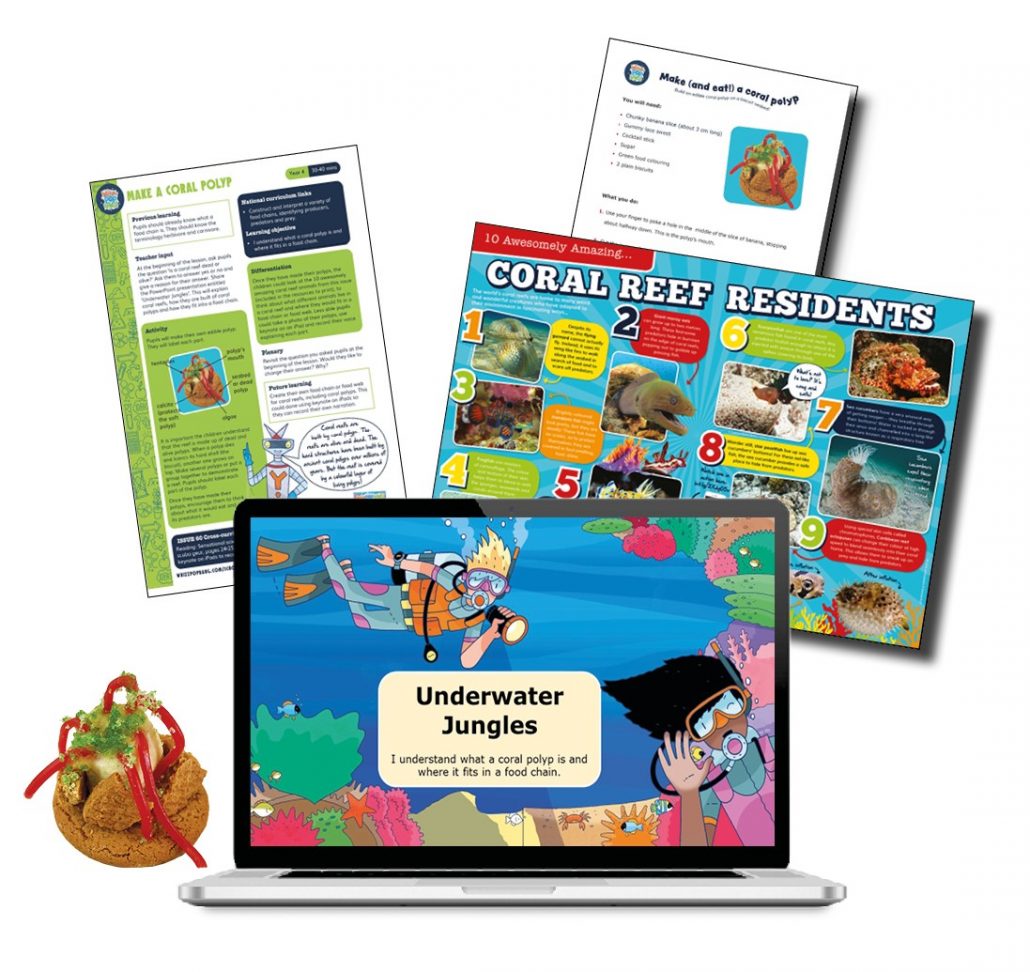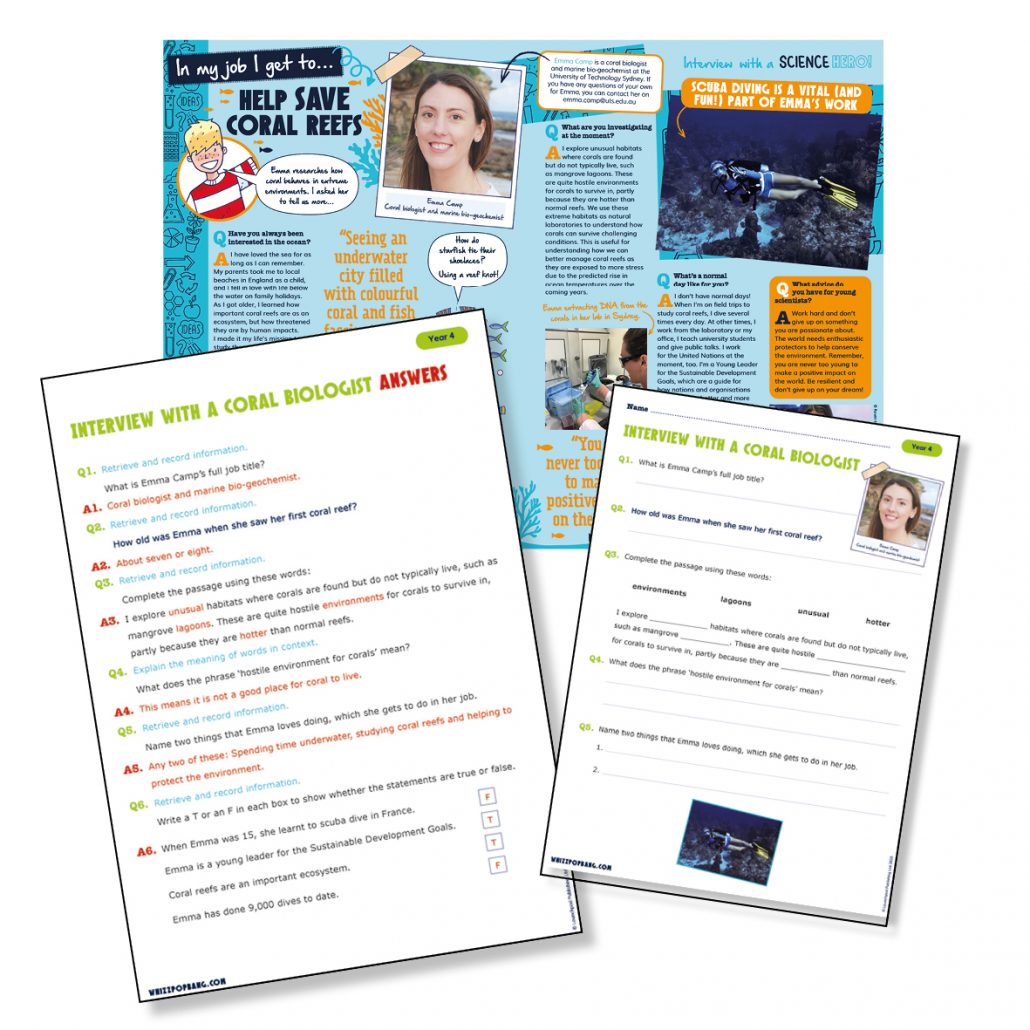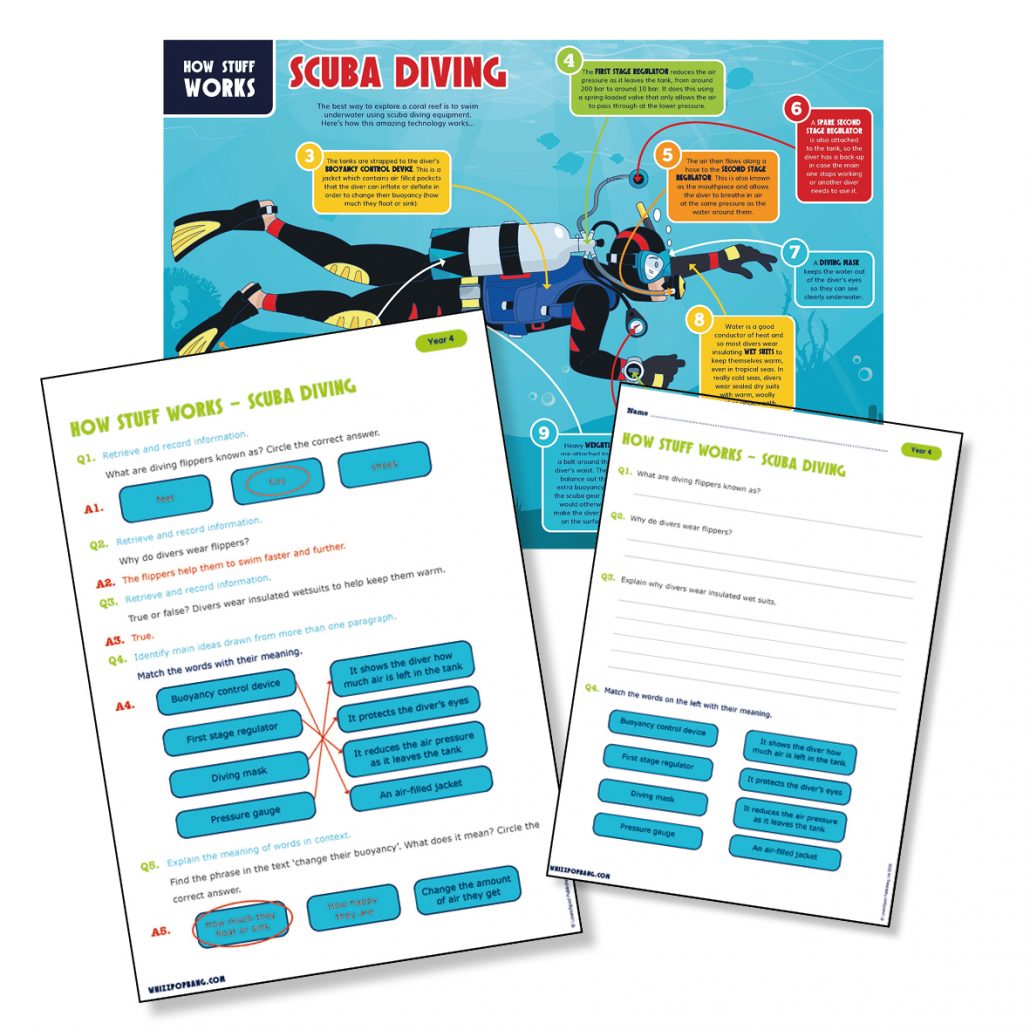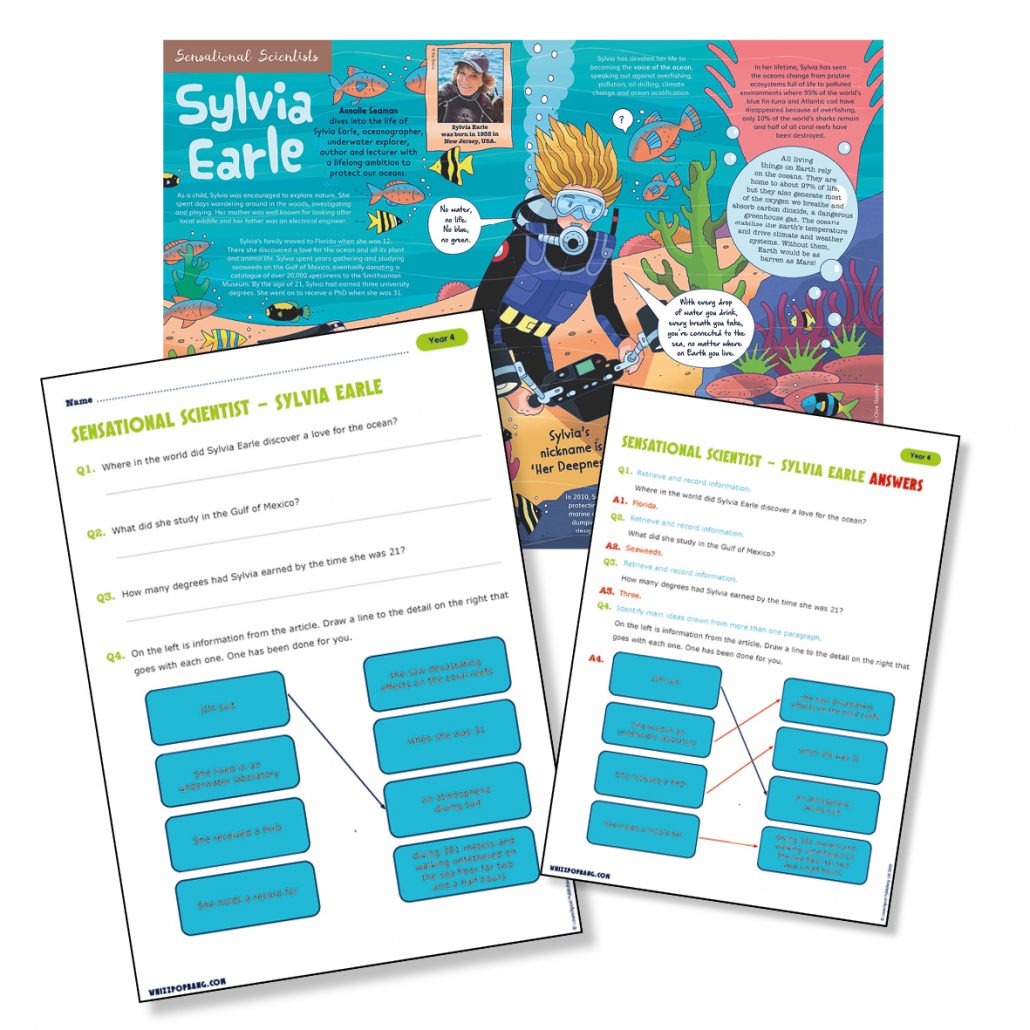Are you looking for inspiring planning resources for teaching ancient Greece in upper key stage 2? Here’s how you can use our new downloadable ancient Greece teaching resources to easily create a memorable lesson …
Where to start?
Before you use the lesson pack, pupils should already know when the ancient Greek period was and they should be aware of the term engineering. This lesson pack links with history, design and technology and science. Therefore, it is a STEAM lesson.
Pupils will carry out a simple experiment to see why the ancient Greeks chose to build with columns. They will test different shapes and see which is the strongest.
The downloadable pack includes:
- A differentiated lesson plan
- A PowerPoint presentation
- A printable Greek theatre
- A text explaining some ancient Greeks’ wild ideas!
Quality reading texts related to the ancient Greeks
We have a whole issue dedicated to the ancient Greeks, which is full of fun facts and information suitable for primary-aged children. Our teachers have created three reading comprehensions with questions linked to the National Curriculum and Curriculum for Excellence:
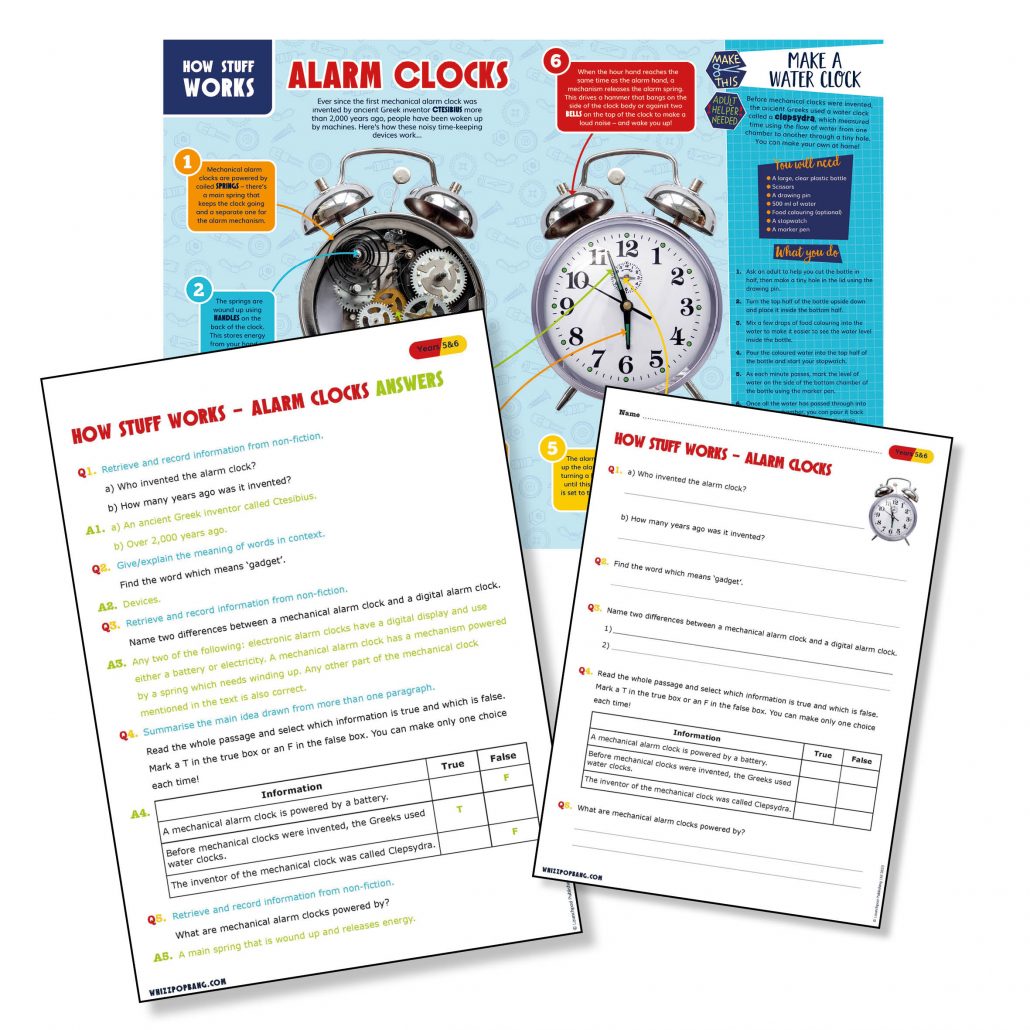
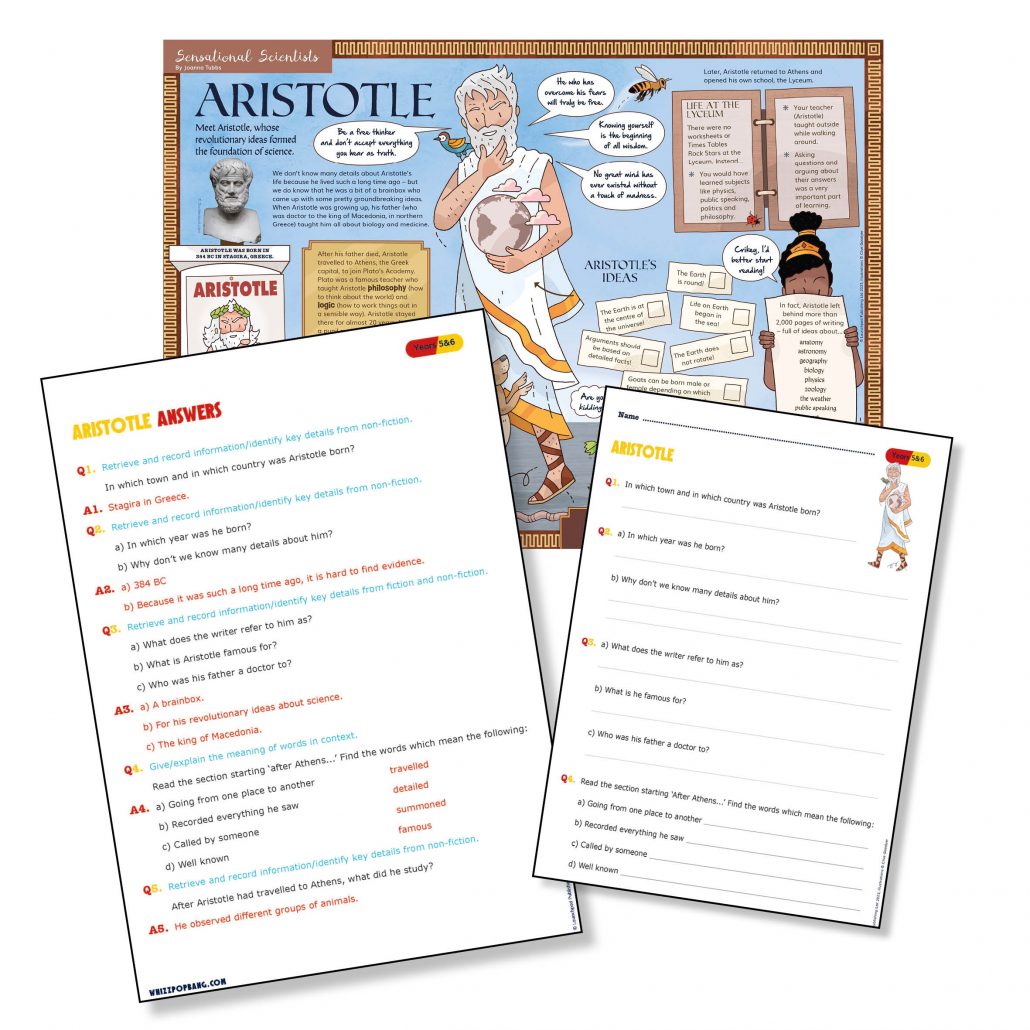
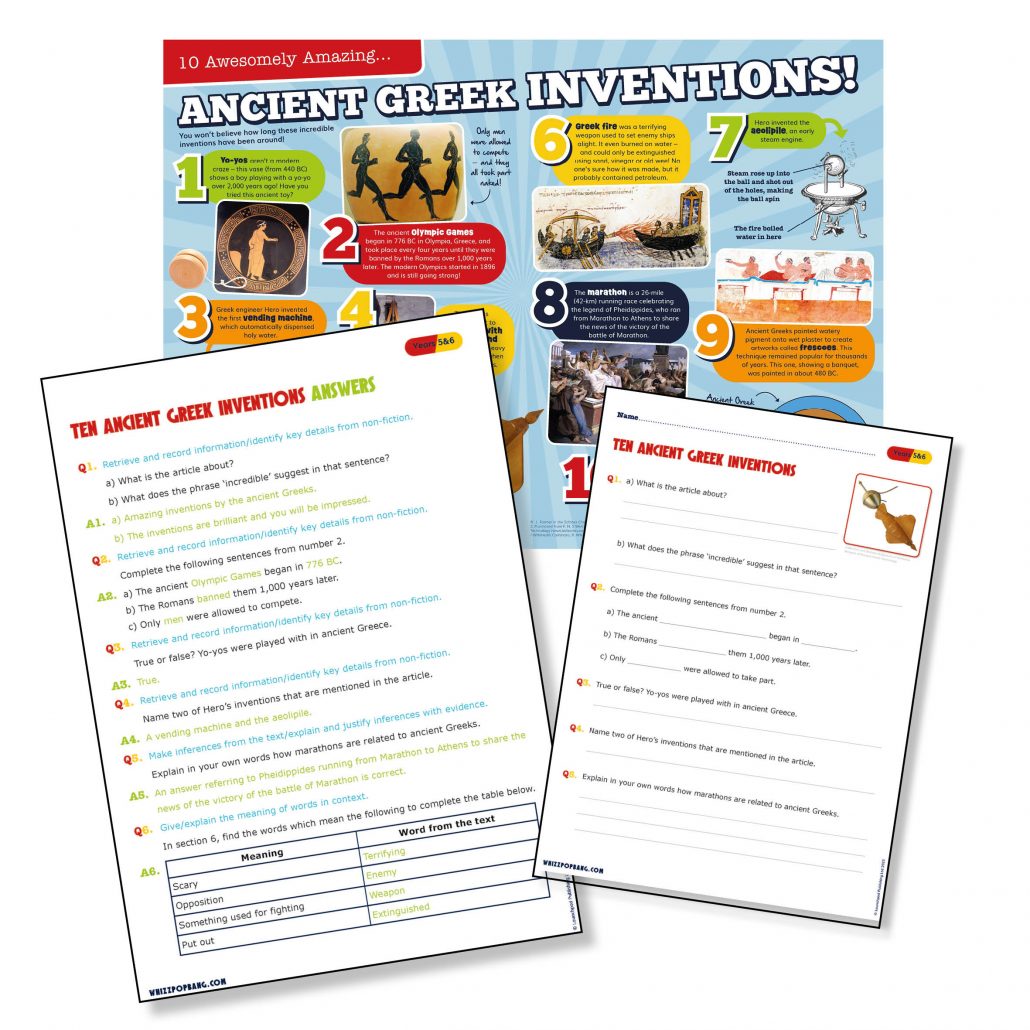
Whizz Pop Bang magazine and teaching resources are brilliant ways to enhance your school’s science teaching:
- We provide downloadable science lesson plans, PowerPoint presentations, hands-on investigations and science reading comprehensions written by primary school teachers.
- Whizz Pop Bang teaching resources link to the National Curriculum, ensuring correct coverage.
- All of our resources are year group specific, ensuring progression between the years.
- We make cross-curricular links to other subjects, such as English, Maths, History, Geography, Art, Design and Technology and PSHE.
Prices from as little as £197.99 per year for a copy of Whizz Pop Bang magazine through the post each month and whole-school access to our ever-growing library of downloadable teaching resources, with unlimited teacher logins.
We’ve also launched a new individual membership option so teachers and home educators can access all of our amazing downloadable resources for just £20 for the whole year.

